Recently, I acquired a 2014 Honda VFR800F. I saw it in red, thought “Buy me! buy me!” and suddenly I was handing over money.
When I spoke to a sales rep about the most recent Honda VFR800 (a black one that I didn’t buy), he called it an “8th gen”. An 8th gen?? What were the other gens? I was really curious because the VFR800 has been produced since 1998, but I couldn’t remember that many changes.
I learned a few interesting things, including
- The VFR generations started with the VFR750 quite a long time ago, and the 1st gen is actually a VF and is almost unobtainable
- Some of the VFR generations were short, and some were very long (like 5th gen)
- There were breaks between some generations when Honda went back to the drawing board
And more things.
Here they are — all the Honda VFR generations and model timeline.
General disclaimer — Honda didn’t name these generations — fans did. There’s dispute about some of them, like whether the VFR1200 belongs in the timeline. I accept that there are disputes, but I’m trying to present here a generally accepted timeline that I see referred to in forums like VFRWorld, and so on. I’ve really tried to research this, but if you disagree, I’m a willing student.
Despite that disclaimer, and despite forum controversy like “Is the 7th gen really part of the same series?” people still generally call the 5th gen a 5th gen and an 8th gen an 8th gen, even though there’s disagreement about what goes before and between them.
Updates / Corrections
* More detail about the 5th gen, which seems to be holding as a classic
* Corrected actuation point to 2006 (thanks to a commenter)
* Typos here and there
Are you obsessed with motorcycles?
Well, I am. That’s why I created this site — as an outlet. I love learning and sharing what others might find useful. If you like what you read here, and you’re a fraction as obsessed as I am, you might like to know when I’ve published more. (Check the latest for an idea of what you’ll see.)
Honda VFR generations and model history in a nutshell
Here’s a table outlining all the Honda VFR generations, from the Gen 1 to the Gen 8. (See my disclaimer above — I welcome being educated further on this.)
Things they all have in common — all models have liquid-cooled DOHC V4 four-stroke engines, pushing through a wet clutch and chain drive.
Another thing all VFRs have in common is the power. With the exception of the Gen 7 VFR which some say isn’t part of the same series, since the 90s they have all produced around 75 kW or 100 hp. This is in that “neither crazy fast nor boringly slow” sweet spot that pleases a lot of riders.
| Generation | Gen 1* | Gen 1/2* | Gen 3 | Gen 4 | Gen 5 | Gen 6 | Gen 7 | Gen 8 |
|---|---|---|---|---|---|---|---|---|
| Model name | VF750F Interceptor | VFR750F | VFR750F | VFR750F | VFR800Fi Interceptor | VFR800 VTEC | VFR1200F | VFR800F, VFR800D |
| Model code | RC15 | RC24, RC26 | RC36 | RC36-2 | RC46 | RC46 | VFR1200F | RC79 |
| Years | 1983-1985 | 1986-89 | 1990-93 | 1994-1997 | 1998-2001 | 2002-2013 | 2009-2017 | 2014-2016 |
| Core features/ changes | Race bike | Gear-driven cams. More relaxed riding position | * More sport-touring (alongside Hurricane sport bikes) * Showa Cartridge forks * Single-sided swingarm * Larger tyres | * Final 750cc * Final carburettors * Improved braking 8 Adjustable rear shock | * Fuel injection (PGM-FI) * Last with gear-driven cams | * VTEC * Linked braking * Chain driven cams * Optional combined ABS | * Much bigger 1200 engine * Optional DCT (auto) * Shaft drive * Comfortable position | * Digital display with tach, gear, fuel consumption * Deluxe model with ABS, traction control, self-cancelling turn signals, and heated grips |
| Engine | 748cc V4 | 748cc V4, 698cc (RC26) | 748cc V4 | 748cc V4 | 781cc V4 | 781cc (VTEC) | 1,237cc V4 (No VTEC) | 782cc V4 (VTEC |
| Max power | 64 kW (86 hp) | 82 kW (110 hp) | 75 kW (~101 hp) | 75 kW (~101 hp) | 81 kW (108 hp) | 80 kW (107 hp) @ 10,500 rpm | 127 kW (170 hp) @ 10,000 rpm | 78 kW (105 hp) @ 10,250 rpm |
| Weight (wet) | 248kg (546 lb) | 236 kg (520 lb) | 253 kg (556 lb) | 226 kg (498 lb) | 235 kg (518 lb) | 218 kg (481 lb) | 267 kg (589 lb) | 240 kg (529 lb) |
* There’s some debate about whether Gen 1 is actually a VFR, as it starts with VF. An alternative view is that Gen 1 is 86-87, and Gen 2 is 88-89.
Gen 1 (or 0) VF (pre-VFR): Honda Interceptor VF750F (RC15), 1983-1985
Yes, the first generation wasn’t a VFR, but a VF. (Note — some people don’t agree with this, and split the next generation into two.)
Main innovative features for the 1st gen Honda VFR:
- V4 engine from the Honda Magna VF750C and Sabre VF750S, but tuned to make 6kW (8 hp) more — by way of a newly designed airbox
- Five-speed transmission, chain drive (the Magna is shaft-driven)
- Slipper clutch (made the clutch slip on hard braking to stop the rear tire from bouncing) — first on a street bike
- Chain-driven cams
- Fully adjustable Showa suspension
Honda built the Honda VF750F as a street replica of a race bike to allow their V4 race bikes to compete. This was in accordance with then-new AMA superbike regulations that bikes be production based.
So the Honda VF750F was made as a very high-quality bike, as close to race spec as possible.
On the other hand, the VF750F (and other V4 motorcycles of this generation) had an engine problem where camshafts would wear very quickly. Honda fixed this problem when they realised there was too much clearance in the camshaft bearings and that the cam lobes were not hardened correctly in the manufacturing process, leading to them wearing out quickly.
Honda set out to fix this with the 2nd generation VFRs from 1986.
Note — the first generation (if you accept the VF as a generation) includes VF1000 and VF500 models as well (which irks some people because it stretches the definition of “generation”, but I find that groups related to the VF750 are welcoming of the other VFs of the same era).
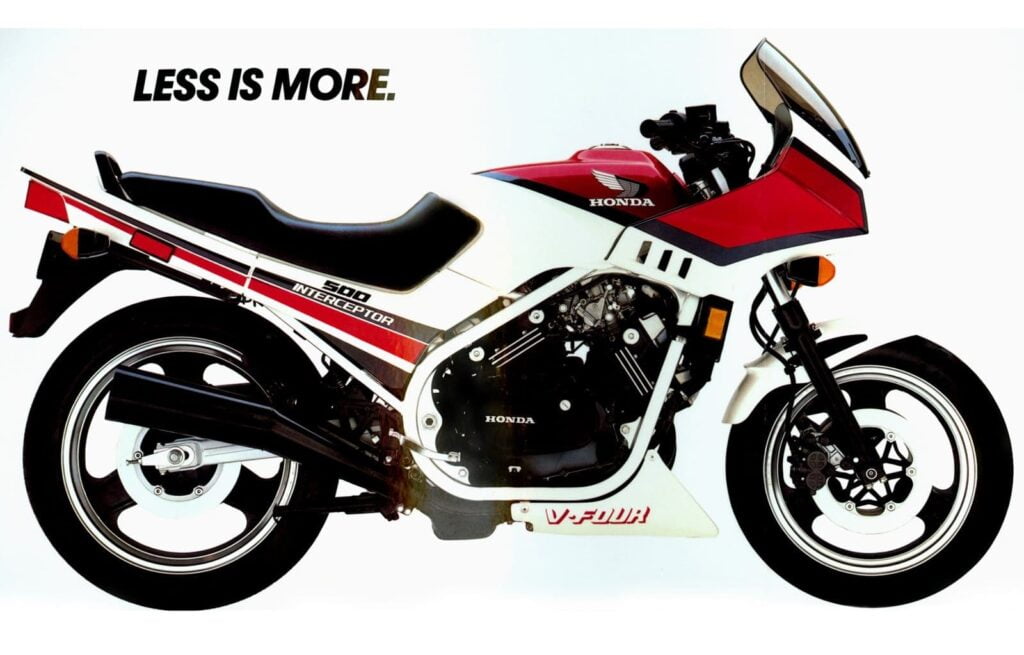
Gen 2 (or Gen 1 and Gen2) VFR — VFR750F (1986-1989)
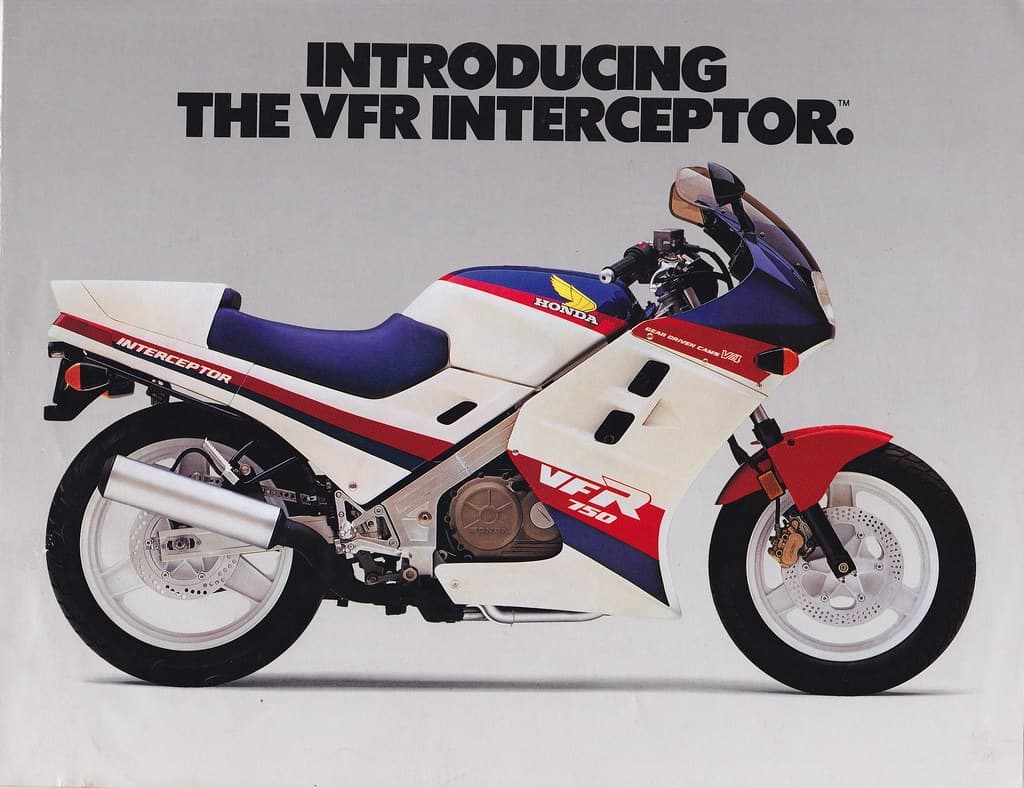
The first Honda VFR750F was Honda’s attempt at fixing the notorious problems with the top end of the VF750 (and siblings).
Note: Some say these are two generations, the 1986-1987 and then 1988-1989 generations (1 and 2 respectively). It’s a little dependent on whether you accept the VF750 as the 1st gen VFR.
The 1986-1987 gen Honda VFR is totally different to previous generations. Apart from the engine size, all parts in the engine and exterior are upgraded.
Some important changes were
- About 10 percent less weight (20 kg, 44 lb) than the VFs
- Gear-driven cams
- A higher redline (11000, up from a previous 10000)
- More horsepower — about 15kW (22 hp) more, according to the press releases, or 3 kW (5 hp) more according to a magazine test
Externally, the 2nd gen VFR is much less race-oriented. This is a street machine! Note, for example, the 18-inch rear wheel and 16-inch front, which was quickly changed by 1988.
Alongside the 748cc VFR750F, the US received a smaller VFR700F2, which was the same other than with a shorter-stroke engine and different tune to suit (different cams and altered timing). This was to beat tariffs imposed at the time on US motorcycles with capacity greater than 700cc, a protectionist measure designed to help Harley-Davidson survive.
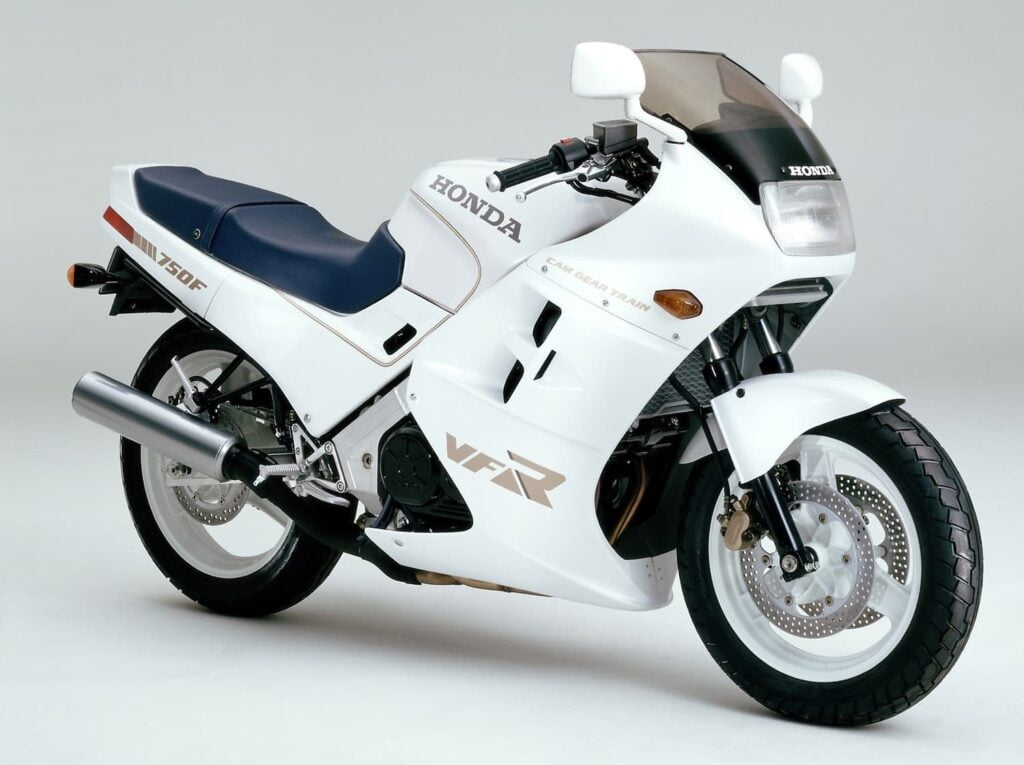
In 1988-1989, Honda made a revision to the VFR750 which was never imported into the US. This is sometimes called the 2nd gen VFR. This revision had
- A two-position flip-up screen
- Stronger fork legs (up to 41mm from 37mm)
- 17-inch wheels front and rear (replacing the 18/16 pair from the earlier VFR)
- More reliable ignition
- Larger valves, larger carbs
- Upgraded gearbox shift mechanism
- Clock and fuel gauge
- Bolt-on pillion footrests (rather than part of the rear subframe)
The stronger fork legs and 17-inch wheels, in particular, made this a desirable upgrade, so some Americans are salty that it never hit their shores.
3rd Generation VFR — RC36 VFR750F (1990-1993)
The 3rd Gen VFR was a huge update — mostly because of that beautiful single-sided swing-arm!
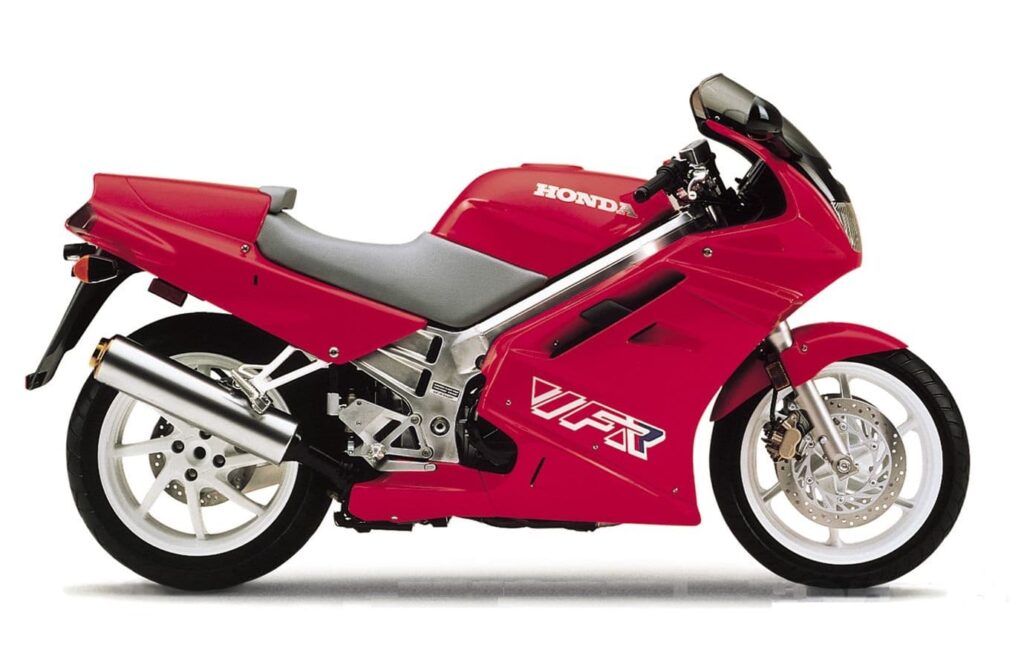
New for the 3rd generation VFR750F:
- Single-sided swing-arm, henceforth a feature on every VFR
- No more “Interceptor” name
- Larger diameter front fork with cartridge dampers (for wider front tyre)
- 17-inch wheels (introduced in 1988, but that model wasn’t imported into the US)
- More weight (14 kg / 30 lb)
Honda dropped the “Interceptor” name from the 3rd gen VFR in response to insurance companies penalising owners with names like that in their motorcycles.
But the basic VFR750 was the same. It was still a 748cc dual-overhead-cam V-four with an aluminium frame — and now, a single-sided swing-arm.
The engine of the 3rd gen VFR750F still made 75 kW (100 hp). Unfortunately, the new model was also some 14 kg (30lb) — more or less, depending on which source you find — heavier. The bike is still fast enough though as a sport-tourer rather than an all-out sportbike (remember, this bike was produced in the era of the CBR900RR).
This generation of the VFR won Cycle World’s Ten Best award every year of its existence. They consider the next generation (’94-’97) the same generation, and also awarded it then.
As with all VFRs, the third-gen VFRs were known for being versatile, usable either as racetrack stars or backroad bombers. And the V-four engine makes a unique sound matched by few.
4th generation VFR — RC36-2 VFR750F (1994-1997)
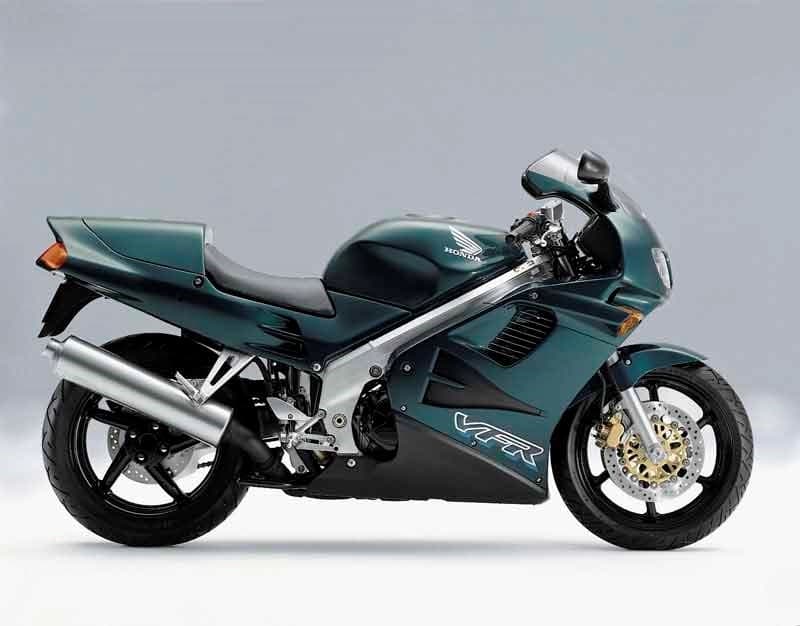
In 1994, Honda made enough revisions to the VFR750 to warrant fans calling it another generation. Honda claimed to have made some 300 changes to the VFR750 4th gen.
Some of these were
- New bodywork, styled after the NR750 (the super-expensive superbike with oval pistons)
- Many tweaks to reduce weight, including wheels, dropping it 8-16 kg (16-30 lb) depending on whose scales you use
- Revised cartridge forks (lighter, but stronger) and swingarm (ditto)
- Last of the 750cc models, last of the carburettor-fed models (with smaller 34mm carbs)
- New design lighter 4/2/1 exhaust for better throttle response
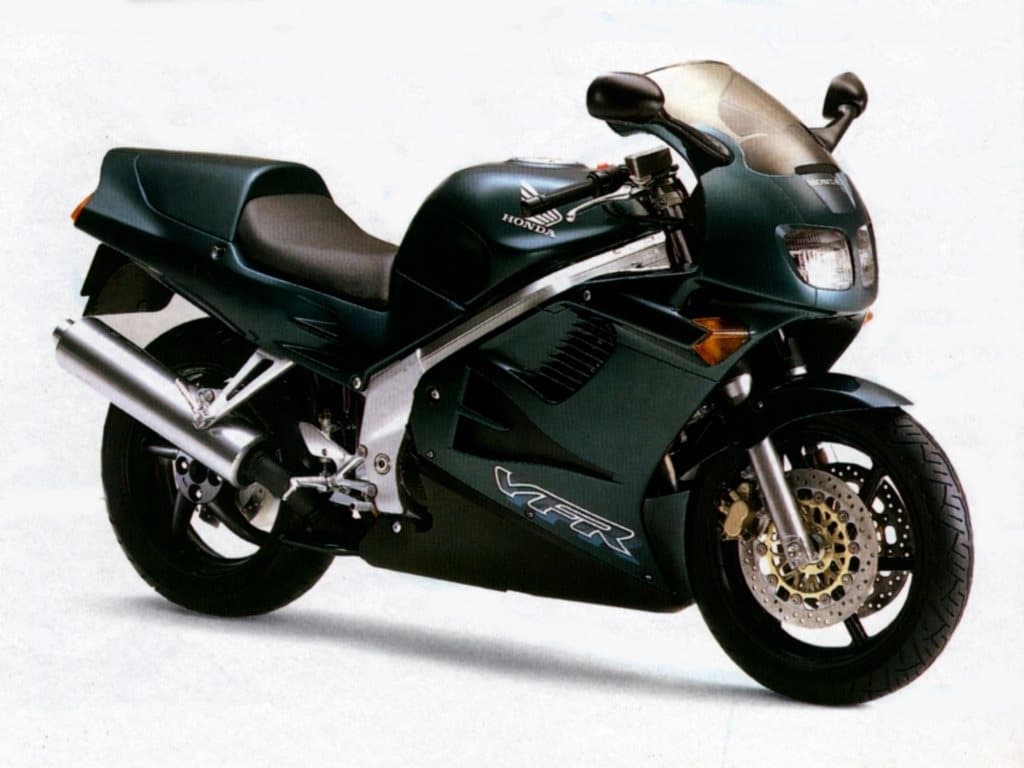
The 4th gen won as many accolades as did the 3rd gen, for much the same reasons — it’s a great all-rounder. The improvements from the lighter weight were welcome, of course.
The 4th gen was the last of the VFRs to be fed by carburettors, which makes it somewhat of a collectible motorcycle.
Even though they’re long in the tooth, owners of VFRs tend to be fastidious, and apart from the general signs of aging (older plastics, and a higher fail rate on parts), you can still find them in reasonable condition if you’re patient.
But you’ll still end up spending similar money to what you’d spend on a much newer (and less unique) motorcycle.
5th generation VFR800 Interceptor (1998-2001)
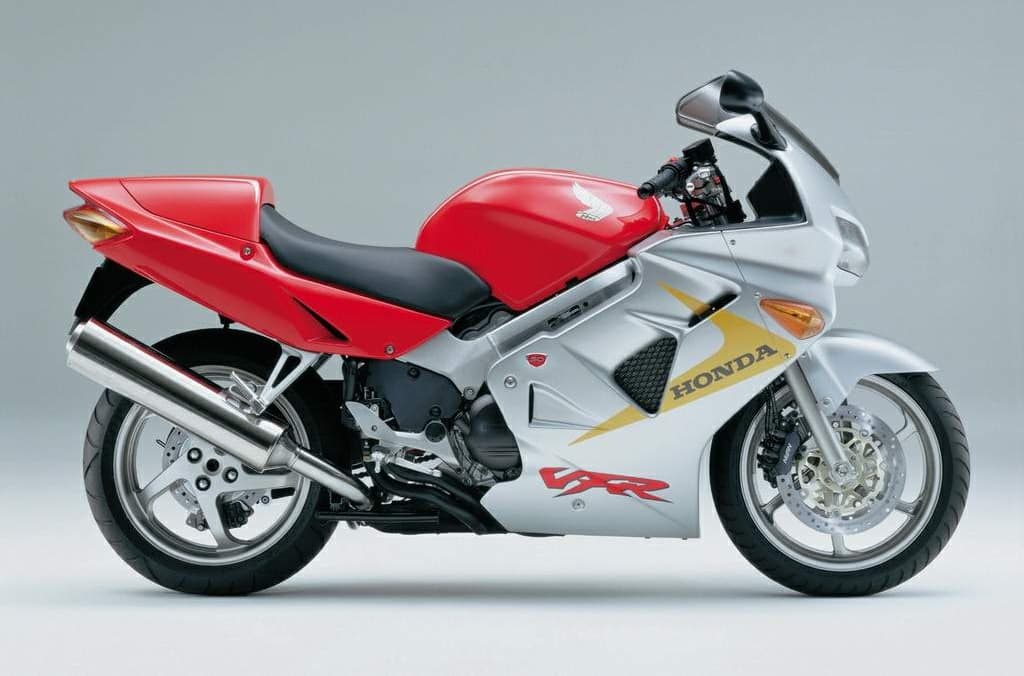
The 5th gen is one of the favourite models of all VFR owners, simply because they have fuel injection, no VTEC, and gear-driven (rather than chain-driven) cams.
Why gear driven cams? Because they have an awesome whine! But it’s not just that — owners believe them to be more reliable. There’s no chain to wear, and no cam chain tensioner to replace.
Want to hear what they sound like? This is a pretty good video on YouTube showing what they sound like when accelerating away.
New for the 5th generation VFR800:
- Larger capacity engine — 781cc (squarer with a slightly larger bore, slightly shorter stroke — see our guide to bore and stroke)
- Fuel injection replacing the carburettors of the 4th generation.
- Return of the name “Interceptor”
- Dual combined braking system (not ABS). The rear brake is attached to the front brake and applies proportionally. Both the hand lever and foot pedal each control the front and rear brakes.
- Digital dashboard
- Last model with gear-driven cams. The chain-driven cams in the 6th gen proved a little problematic.
The 5th Gen VFR is, like models before it, more than the sum of its parts. It handles like a dream. Even when being wheelied. One reviewer said that it’s “unfeasibly controllable when lofted… in fact, it would have been rude to not have turned the bars from lock to lock whilst in the air to demonstrate”. OK, point taken.
The new Honda VFR800 was a homologated version of the race spec RC45, not just a bored out VFR750. The engine, mounts, and many other components were all changed. But the spirit remained the same — a touring-oriented but very sporty V4 motorcycle.
The engine is still a gem, producing 95 rear wheel horsepower at 10000 rpm.
Interim update — 5th gen 2000-2001
In 2000, the 5th gen got some updates, including
- A closed-loop fuel injection mode, meaning it would cruise at higher efficiency (see our guide to closed / open loop fuel injection)
- A catalytic converter (assuming the exhaust is still stock)
- Temperature-actuated fast idle, negating the need for a choke lever
The 2000-2001 VFRs are very well-loved. Posts on VFRworld wax lyrical about them being some of the best VFRs — nay, motorcycles — ever built.
That said, you may opt for a 1998-1999 version without the oxygen sensors and cat. Less weight, fewer failure points… though it may drink a little more fuel.
6th generation Honda VFR (2002-2013)
New features for the 6th gen
- Engine overhaul, still a DOHC fuel-injected 781cc V4, but now making 81 kW (110hp) @ 10,500 rpm, and 82 Nm (61 lb-ft) @ 8,500 rpm
- VTEC valve actuation — two-stage valves that change from two valves per cylinder to four mid-way through the rev range
- Styling makeover with sharp, angular look, replacing the smooth lines of the Gen 5
- Chain-driven cams (replacing gear-driven cams)
- Linked front and rear brakes
- Optional ABS in the later years

The most significant change to the 6th gen VFR800 was the VTEC valve actuation, which opens up two more valves at higher RPM. On the earlier models this was at 7000 rpm, but by later models in the generation this was lowered to 6400 rpm.
The VTEC valve actuation system works by only allowing two valves out of four valves in each cylinder to be opened by the camshafts. A controller opens up the other two valves at higher RPM. What the controller actually does is engage send power to a solenoid which actuates an oil spool valve (a sliding pin). The valve then sends oil pressure to the lifter actuators, and positions their spring-loaded engagement pins above the valve stems to initiate actuation of the remaining two valves.
The goal of VTEC is to have the torque-forward benefits of a two-valve engine at low RPM, and high power at higher RPM.
Unfortunately, VTEC was an unwelcome addition for many VFR lovers. The early models (before 2007) had what many people called “abrupt” VTEC valve actuation, which could be alarming when coming out of a corner — a bit like a turbocharger coming on after turbo lag.
I’m pretty sure that you could call the VTEC lag “character” if you wanted, and with the passage of time, it is becoming a historic curiosity, like the turbocharged CX500 Turbo. Not necessarily a great idea, but super cool to have in the garage these days.
To counter this abrupt VTEC actuation, Honda changed the ECU mapping to engage VTEC at 6400 RPM for the 2006+ models. This made for a smoother transition. At the same time, Honda made ABS standard.
The only other consumer motorcycle that had VTEC, by the way, was the Honda CB400 Super Four, a 399 cc inline four standard. Check out its history here.
Another significant change for the 6th gen was the move to chain-driven cams. The goal of this move was to reduce weight and noise, but many VFR owners actually loved the whine of gear-driven cams, and didn’t want another thing to maintain periodically (though very infrequently).
The ABS model of the VFR800 also has a rear preload adjuster knob. For the non-ABS models, you have to use a C-spanner.
Finally, the 6th gen retained linked braking, which some people complain about (but which, in most street usage, is not noticeable by many riders).
6th Gen X — VFR800X Crossrunner (2011-2014)
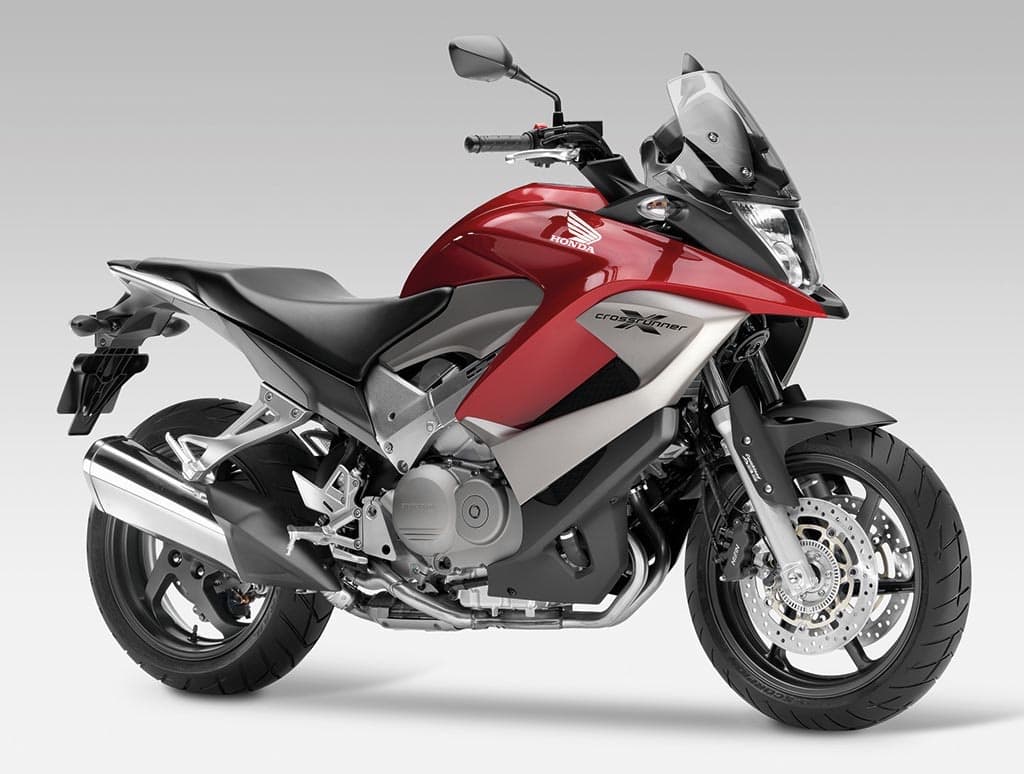
Not really a generation by itself, but in 2011 Honda introduced the VFR800X Crossrunner in many markets (though not in the US).
The Crossrunner is a VFR800 but in touring form. Same engine, but with a different riding position that’s more upright, supported by taller handlebars.
The Honda VFR800X Crossrunner has a slightly detuned engine that makes 74.9 kW (100.6 hp) @ 10000 rpm, with max torque of 72.8 Nm (53.7 ft-lb) @ 9,500 rpm. Quite high rpms — still quite sporty, despite the upright position. The Crossrunner also comes with standard ABS.
Compared to the VFR800, the best thing you can say about the Crossrunner is that it’s even more comfortable, and the worst thing you can say is that it doesn’t look as good. Like many cult bikes, the Crossrunner is loved by its owners who have a slightly different priority set.
Honda later updated the VFR800X as well, incorporating changes from the 8th gen VFR.
7th Generation VFR — VFR1200F (2009-2017)
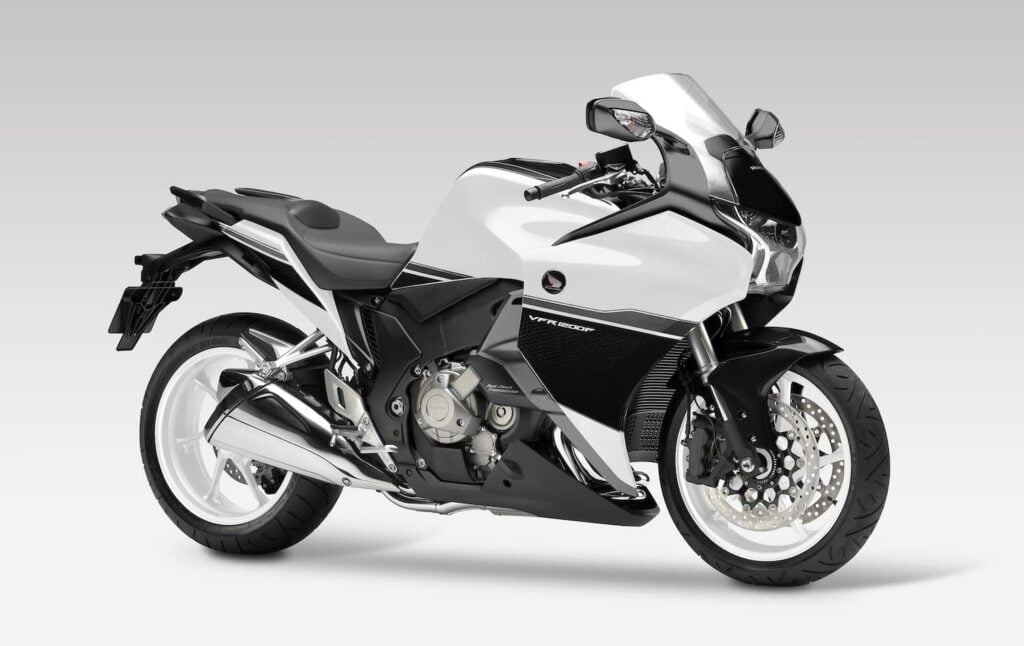
The 7th generation VFR is a bit of an outlier — it has a much bigger engine, is much heavier, and has a shaft drive. So much so that people claim it doesn’t really long in the series of VFR motorcycles. Really, the most it has in common is a V4 engine, a general sport-touring riding position, and a single-sided swing-arm.
But the VFR1200F or “7th generation VFR” is a very different motorcycle. In fact, Wikipedia lists two motorcycles as its predecessors — the 6th generation VFR800 and the Honda CBR1100XX Super Blackbird, a high-speed touring bike! This bike took over from both those bikes.
Most VFR owners weren’t convinced, as weren’t Blackbird owners.
Honda made the VFR1200F from 2009 until 2017, adding a few colour schemes along the way.
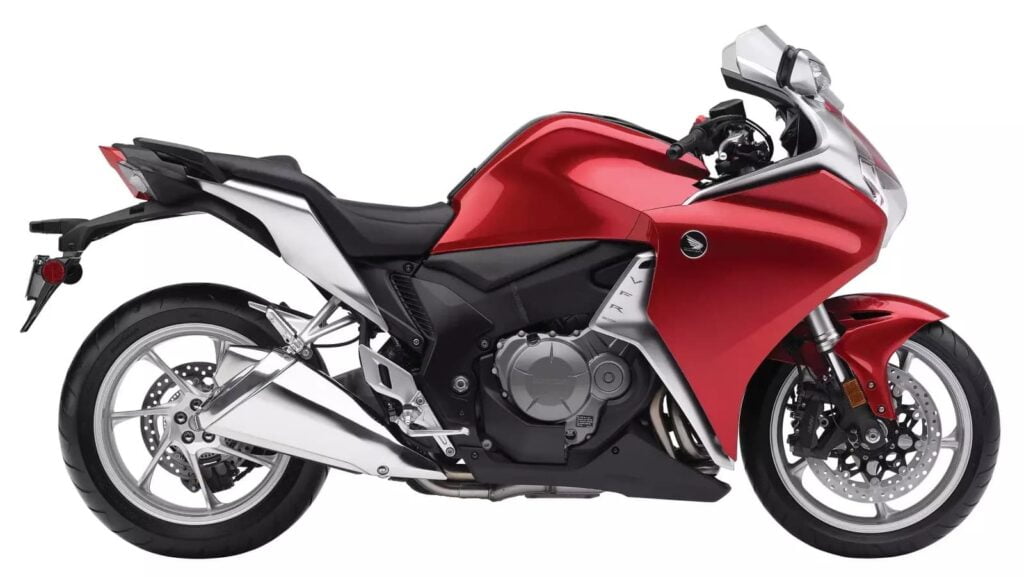
Here are the things that changed for the 7th gen VFR, the VFR1200F
- Engine: 1,237cc 76-degree V4 (water cooled) — non-VTEC
- Power: 127 kW (170 hp) @ 10000 rpm, and 129 Nm (95 lb-ft) @ 8750 rpm
- Ride by wire including ABS and traction control (called Honda Selectable Torque Control)
- Optional Dual Clutch Transmission (essentially automatic), called “DCT”. Also has paddle shifters for manual shifting.
The DCT feature is important to mention because the VFR1200 was the first production motorcycle to have DCT. The same system has been a popular option in many subsequent Honda motorcycles, including the venerable Gold Wing, Africa Twin, and the new-for-2021 Honda Rebel 1100, along with a few other models along the way.
7th Gen X — Honda VFR1200X Crosstourer
Aside from the huge changes to the VFR, the VFR1200F also spawned an upright adventure-touring style motorcycle, the VFR1200X Crosstourer from 2012.

Much like the VFR800X Crossrunner is an upright version of the VFR800, the Crosstourer is an upright adventure-touring version of the VFR1200. It has the same 1,237cc V4 engine, but is tuned for lower power with a peak of 95 kW at 7750 rpm, and peak torque of 126 Nm at a significantly lower 6500 rpm.
The VFR1200X also has an adjustable screen, spoked wheels (still with tubeless tyres), and a range of luggage accessories.
The VFR1200X looks like a very compelling option for long-distance travel in the flesh — but didn’t sell well next to the Africa Twin.
Oh, and if you don’t like any of those options, consider the Ariel Ace, a Honda VFR1200F engine and some components in a radically different chassis. (Not a Honda, but I found the photo by accident and it looks cool.)
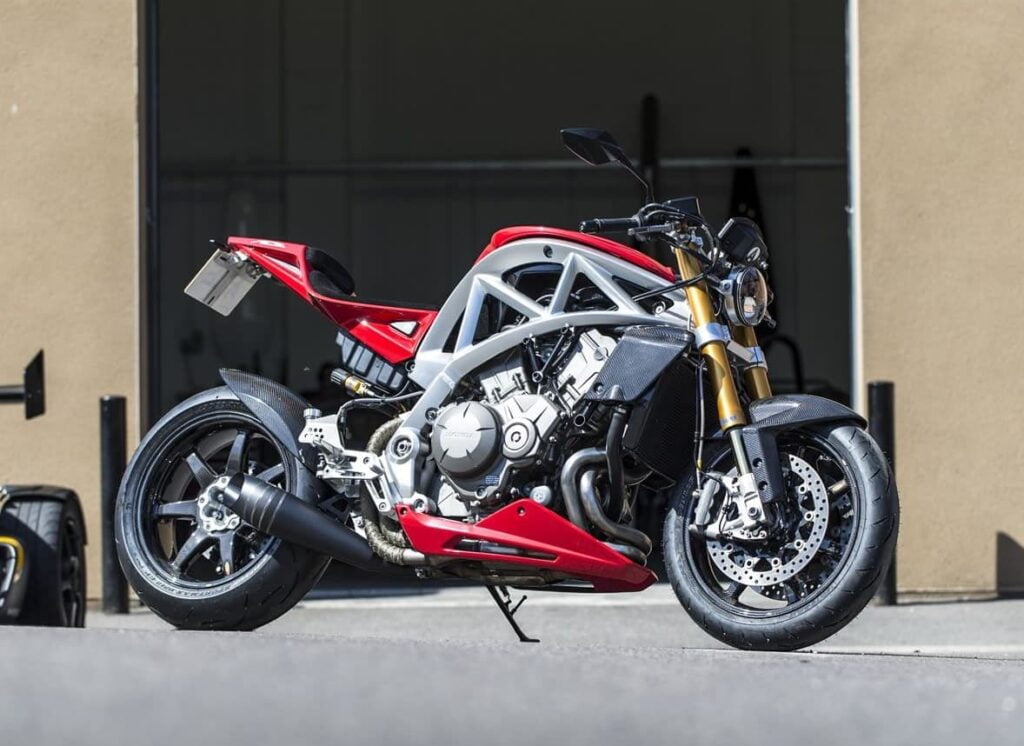
8th gen VFR — VFR800F (2014-2017)
Finally, the Honda VFR800F — the bike I ended up buying.
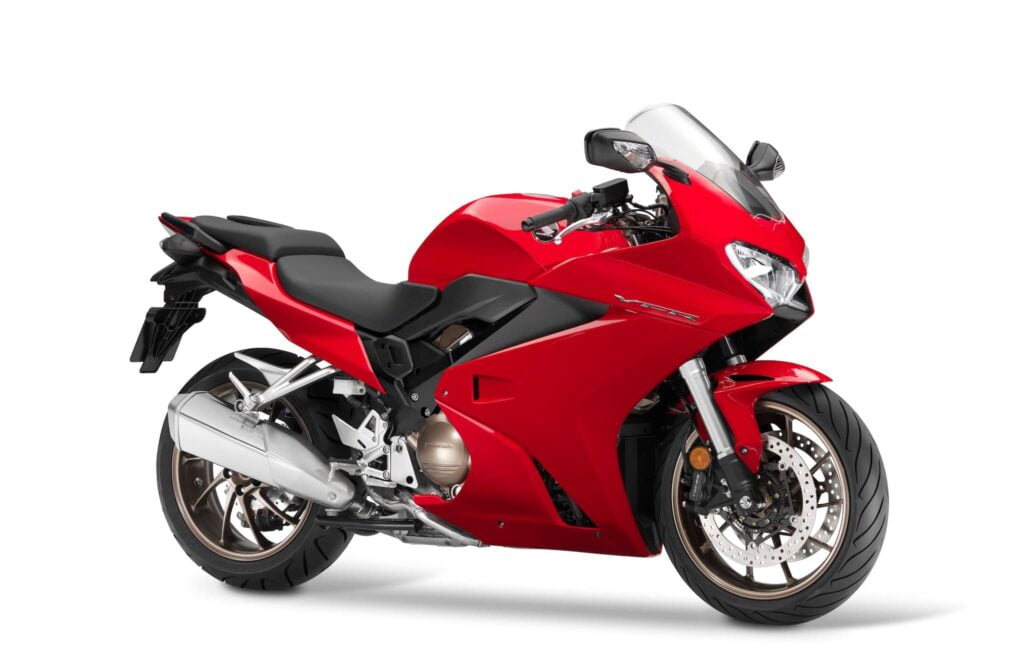
New for the 8th Gen VFR, the VFR800F:
- Slightly re-tuned engine — still a 782cc 90-degree DOHC V4, but 78 kW (104hp) @ 10,250 rpm, and 75 Nm (55 lb-ft) @ 8500 rpm. Just slightly down on power and torque, but noticeable.
- Standard Traction control (switchable)
- Optional ABS (standard in some markets)
- Optional factory bar risers that integrate very well
- Optional luggage that looks really good (and not weird when it’s not on)
- International models and US deluxe model with standard ABS, heated grips, center stand
- Last model VFR to be made…
The last gen Honda VFR was much like the previous versions. Except it didn’t make more power — it made slightly less. And apart from that, not much was different at all — it wasn’t like previous owners were clamouring for traction control or standard ABS.
I really like my VFR800 (here is my full review of it). It looks great, sounds wonderful, feels really nice to ride (a nice balance between vibrations and smoothness), handles intuitively, and has just the right amount of power for me to shift through gears without being in very illegal ranges.
The suspension is not fully adjustable and some call it “simple” — but I can hang (somewhat) off it around turns easily and it feels very stable, even to me, a non-professional rider.
It’s unclear why the Honda VFR800 was killed off, but the headline reason was poor sales. The cause of the poor sales has been guessed to be:
- High price vs really attractive competition — both the Yamaha FJ-09/Tracer 900 and Kawasaki Ninja 1000 were more powerful, lighter, and comfortable. And for the same price as a VFR800, you could get a high-power sportbike.
- Declining sport-touring market as people gravitate towards adventure sport-tourers
- Not different enough to warrant an upgrade from the earlier versions (for the VFR diehards)
- Annoying pricing in the US — people wanted the Deluxe version at Standard prices. International markets just had one package (the “Deluxe” one).
So the VFR800 had a niche that was too small for it to exist. The leftover stock was heavily discounted and sold cheaply in the US.
But for those who were patient (like me), it’s a lot of bike for a really attractive price. And it still has a few things that give it cachet.
Here’s a few reasons to pick up an 8th generation VFR800:
- A V4 engine: There are no bikes being made with a V4 engine that aren’t high-powered Aprilias and Ducatis. They’re great, but they are expensive to own.
- Style: They look really good! The bodywork is elegant and minimalist. There are few affordable and recent used bikes being made with a single-sided swing arm, and almost zero from Japan, other than the Honda CB1000R.
- Affordable rider aids: They have enough rider aids to feel safe — ABS and traction control (although I find the traction control too intrusive even for regular road riding)
There are, of course, downsides to owning a VFR800 8th gen. A few of these are
- More expensive maintenance — VTEC in a V-4 engine under bodywork mean that valve services will be expensive, probably a full day of labour. Luckily, these only come up every 25600 km or 16000 miles.
- It’s a bit top-heavy — Compared to other modern sportbikes and sport touring bikes, the VFR800 8th gen is slightly cumbersome. It’s not hard to handle, and definitely can perform very well in capable hands, but it doesn’t glide into corners like many more advanced sport bikes (even older ones).
- The traction control is a bit intrusive. I sometimes turn it off, even for moderately-paced street riding. But I don’t like the warning display that comes up on the dash.
If you put up with minor annoyances (and all motorcycles have them), the VFR800 8th gen is a lot of motorcycle for the money. I eventually replaced it, but took a major hit in convenience — the bike that came after it lacked heated grips, comfort, convenient luggage options, a center stand, and other stuff. (It did, however, have twice the power, and a lot more character…)
8th gen X — Honda VFR800X Crossrunner, 2nd gen (2015+)
In 2015, Honda updated the VFR800X, incorporating a lot of updates made to the 8th gen Honda VFR800. By the spec sheet, the engine appears to be exactly as it is in the 2014+ VFR800.
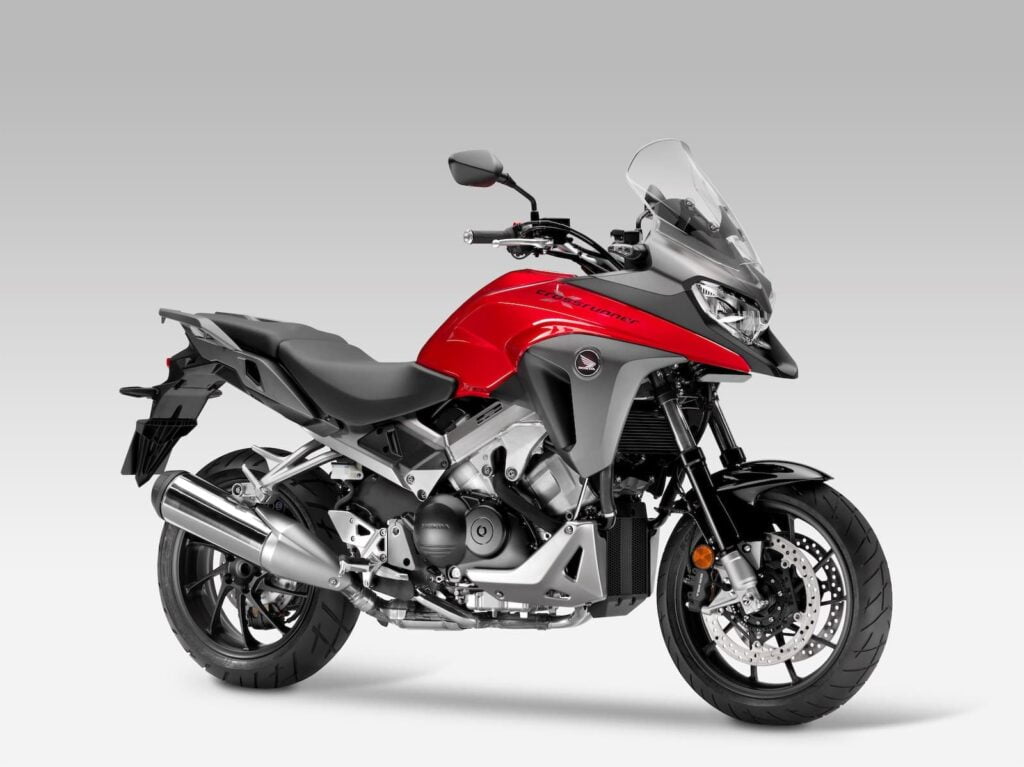
You can visually identify a 2nd gen VFR800X by the front headlights — horizontal rather than stacked.
Some of the updates to the Crossrunner compared with the previous generation were
- Sharper adventure styling, plus refined ergonomics and longer travel suspension, new wheels and brakes.
- Honda Selectable Torque Control (HSTC) system
- Standard ABS (as with the previous version)
- Full LED lighting
- 5-stage heated grips
- Self-cancelling indicators
- Height-adjustable seat are all fitted as standard.
- Same options — luggage, center stand, etc.
The Crossrunner is a bit of a fan favourite, and many in the US complained that they never got it. Those in Europe can still get it though — it’s still being made.
Again, like the earlier Crossrunner, you’d pick the VFR800X over the VFR800 if you want that engine and all the features, but don’t want to be in quite as sporty a position. It’s nice of Honda to make something for everyone!

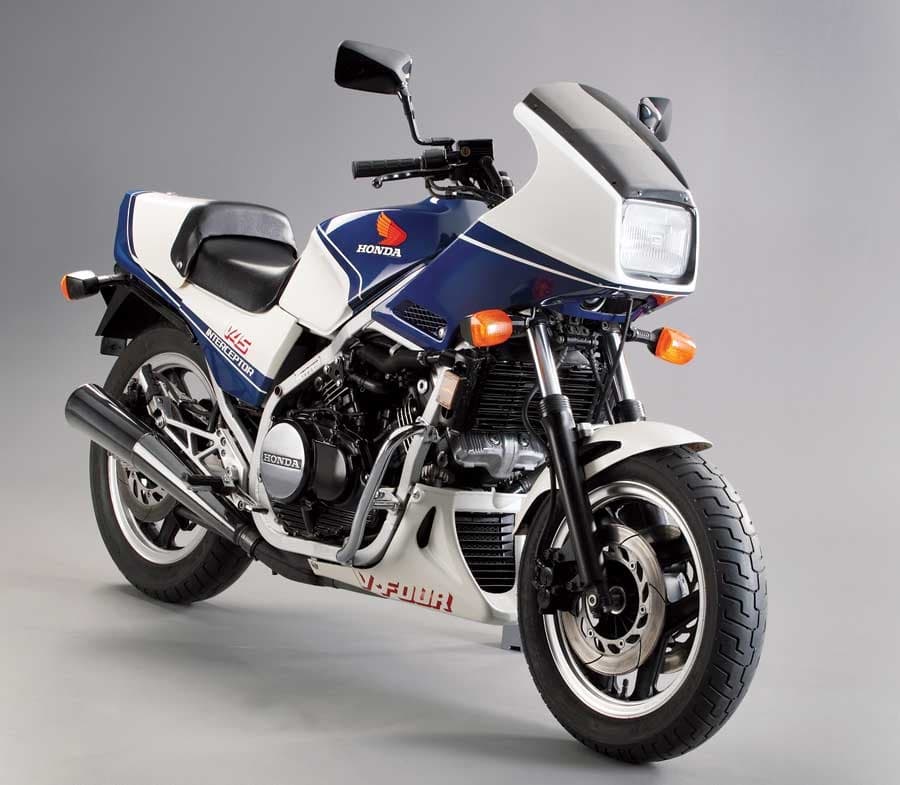
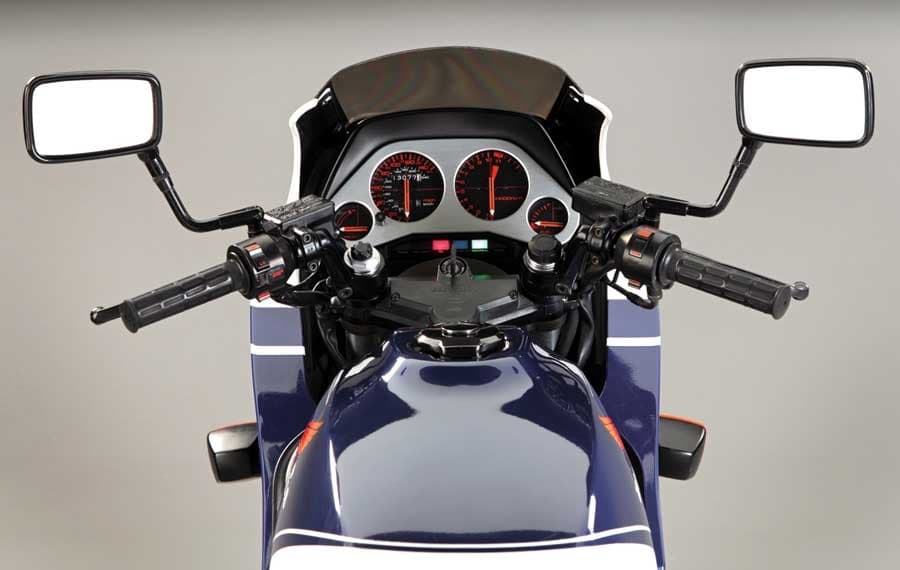
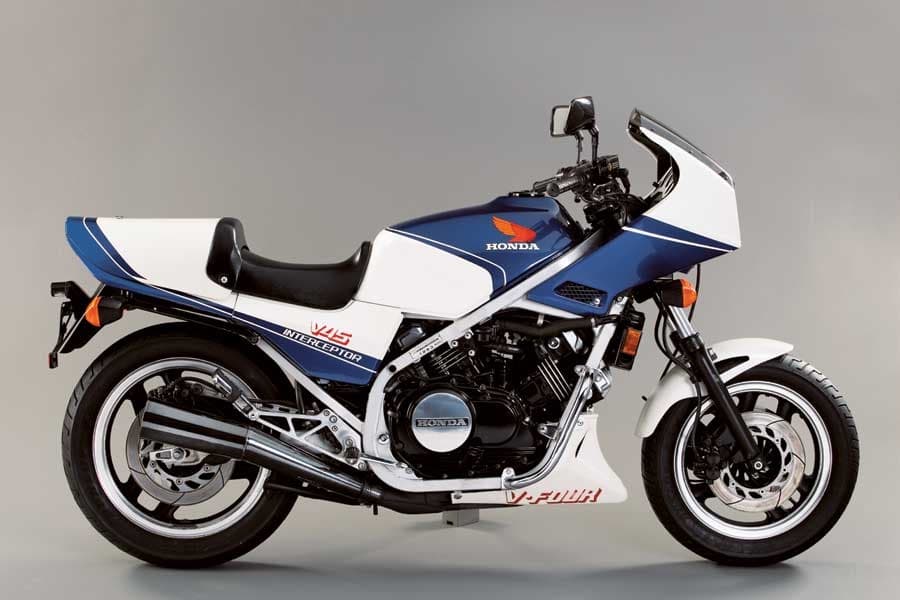
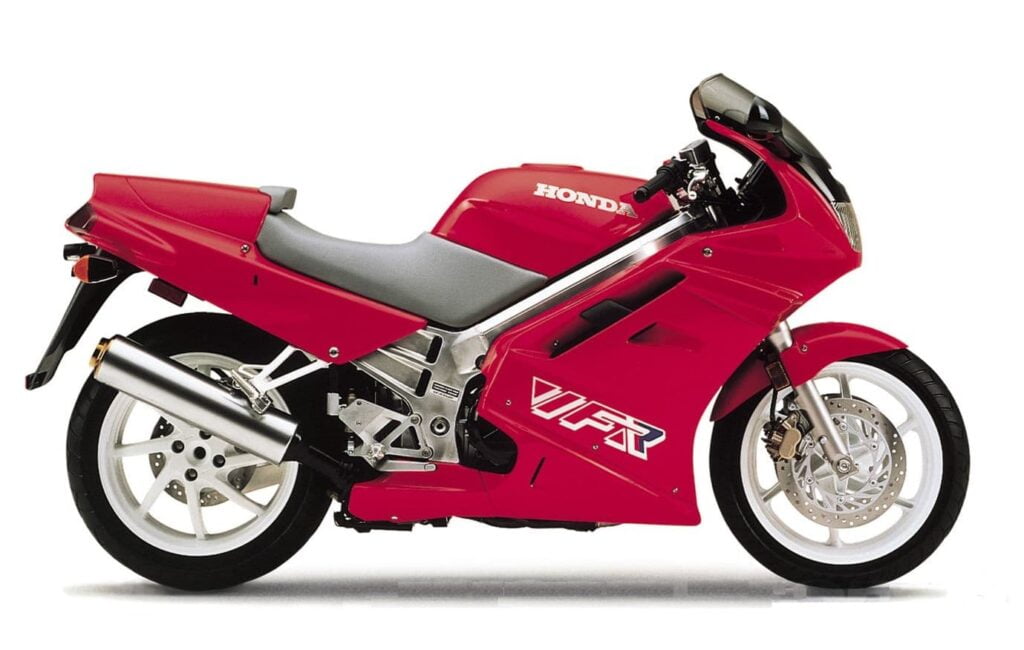
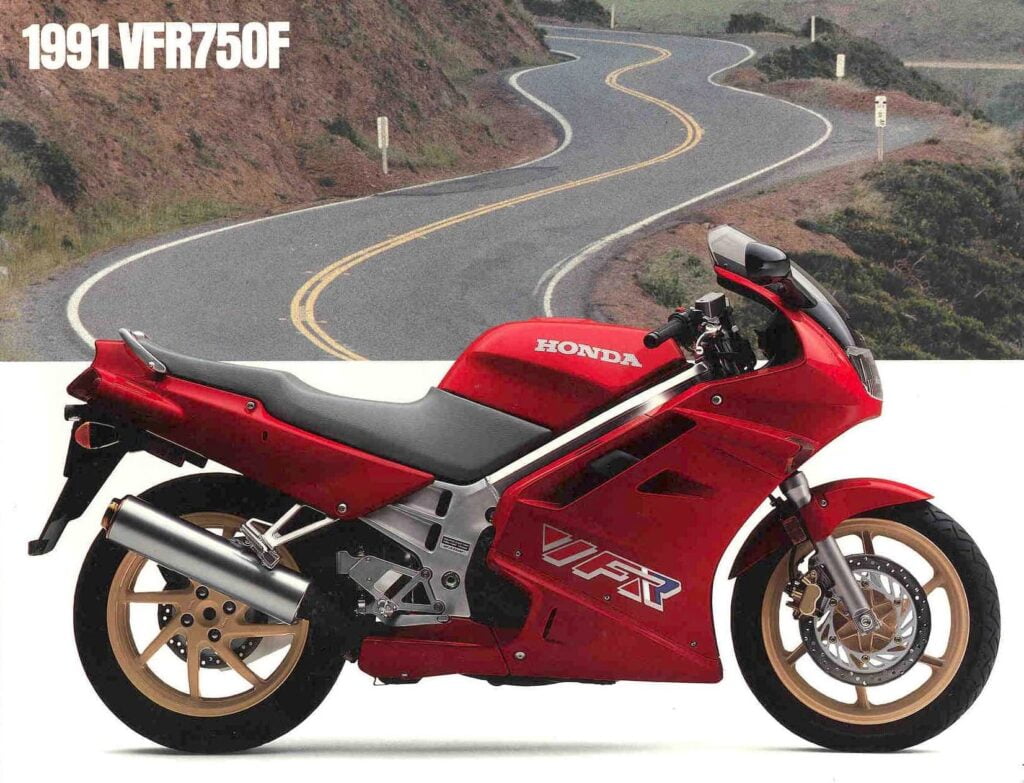
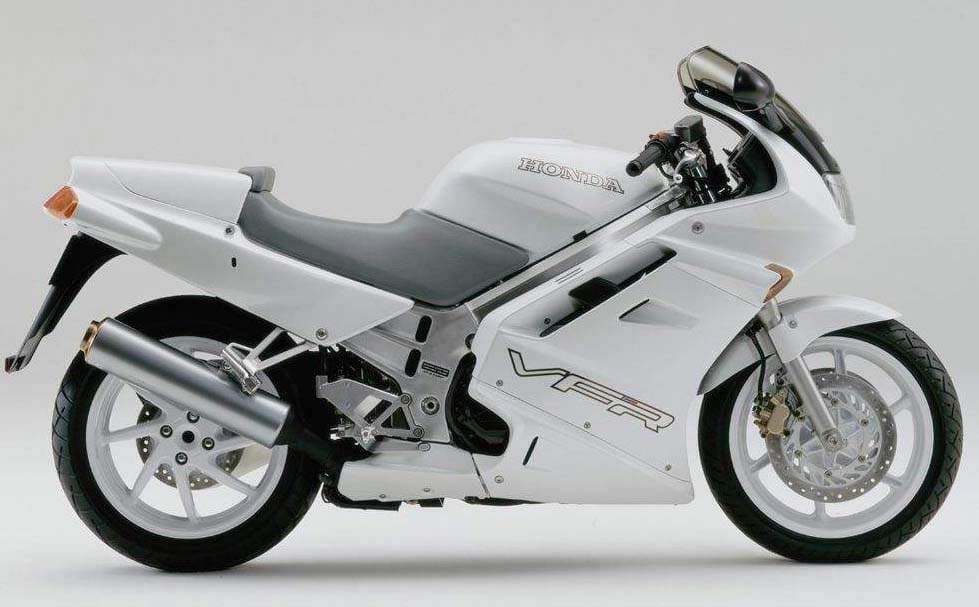
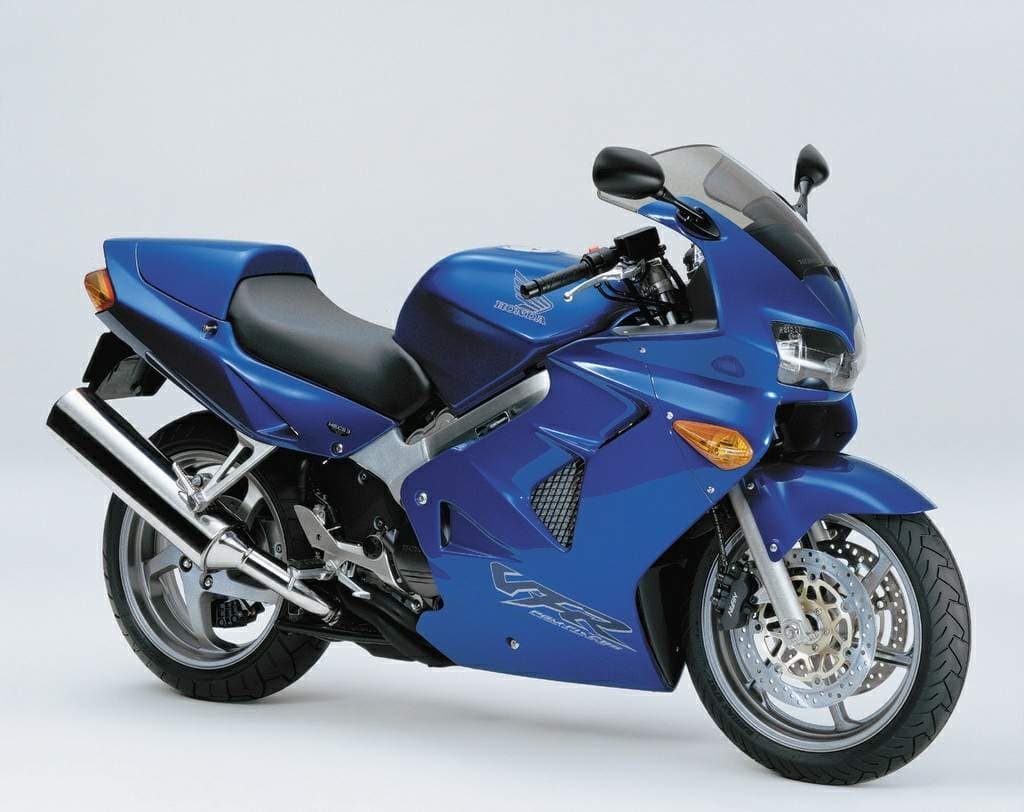
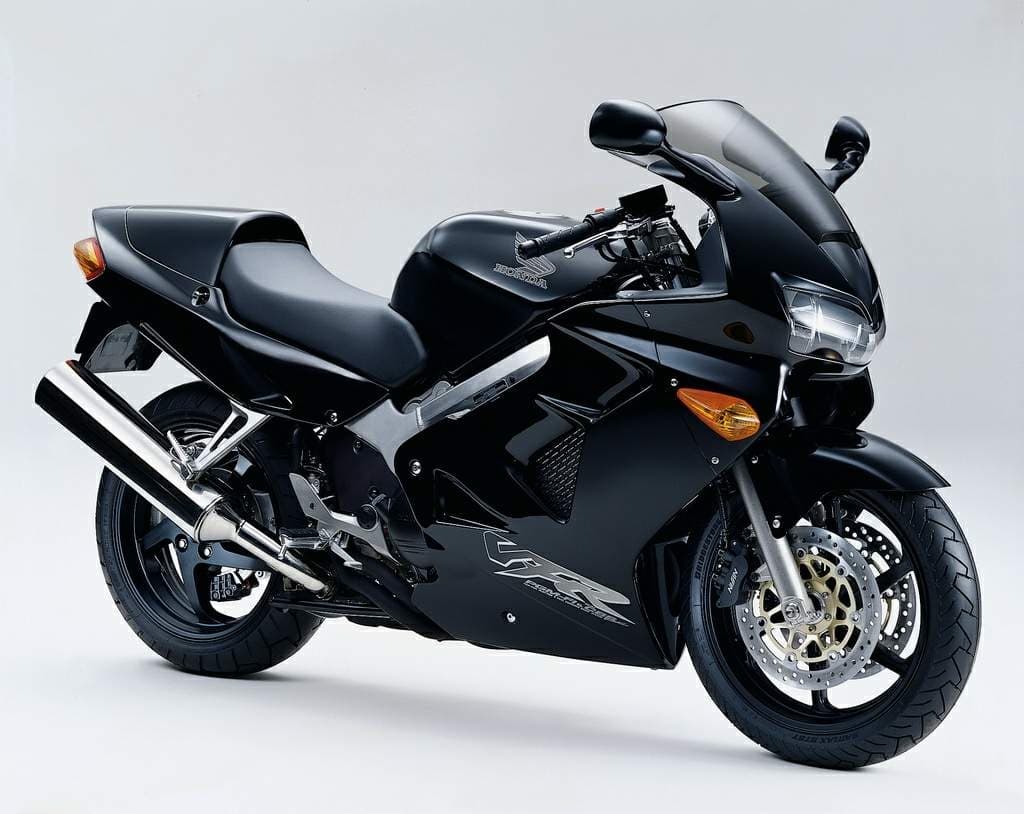
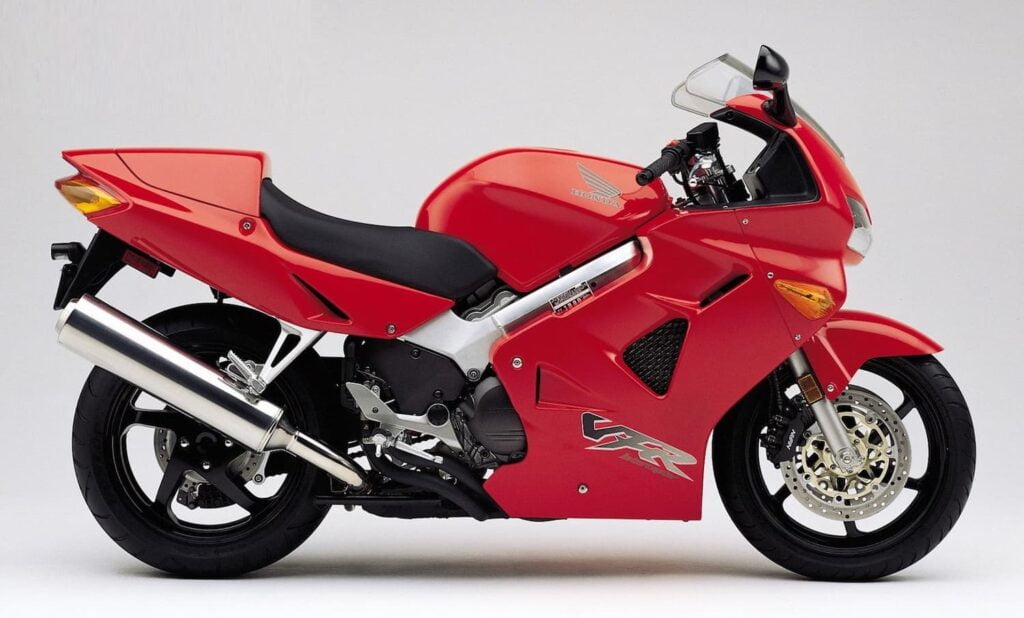
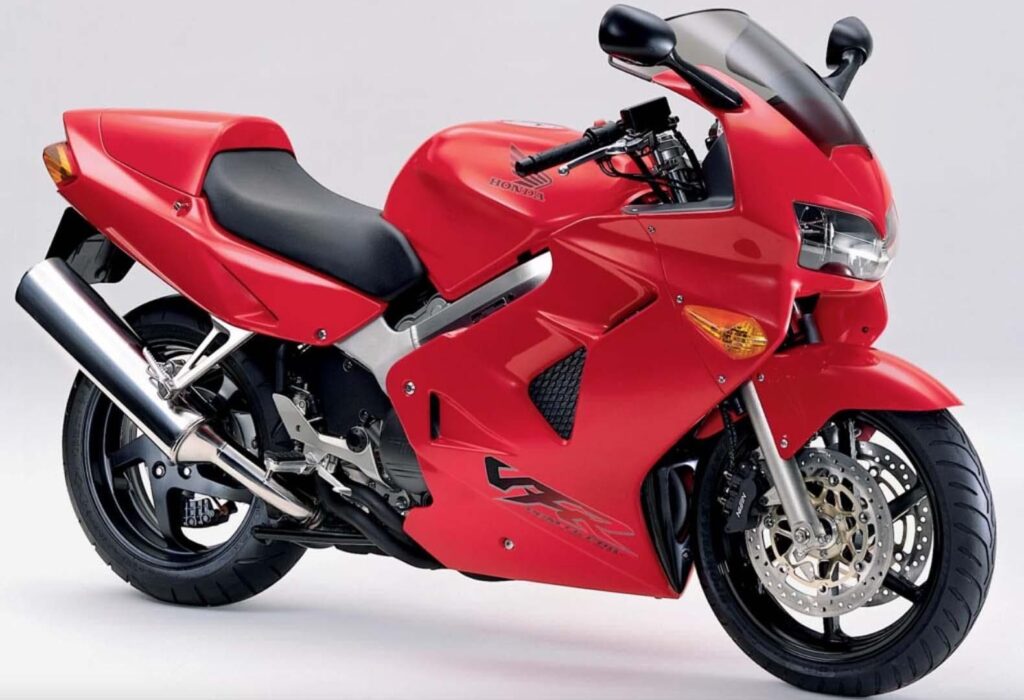
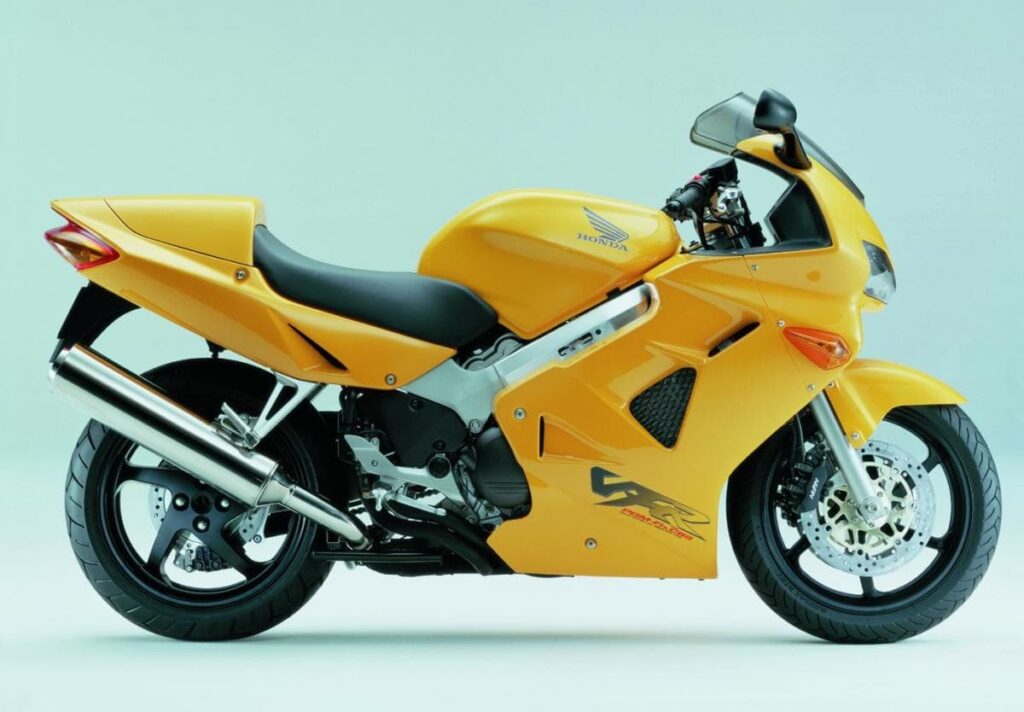
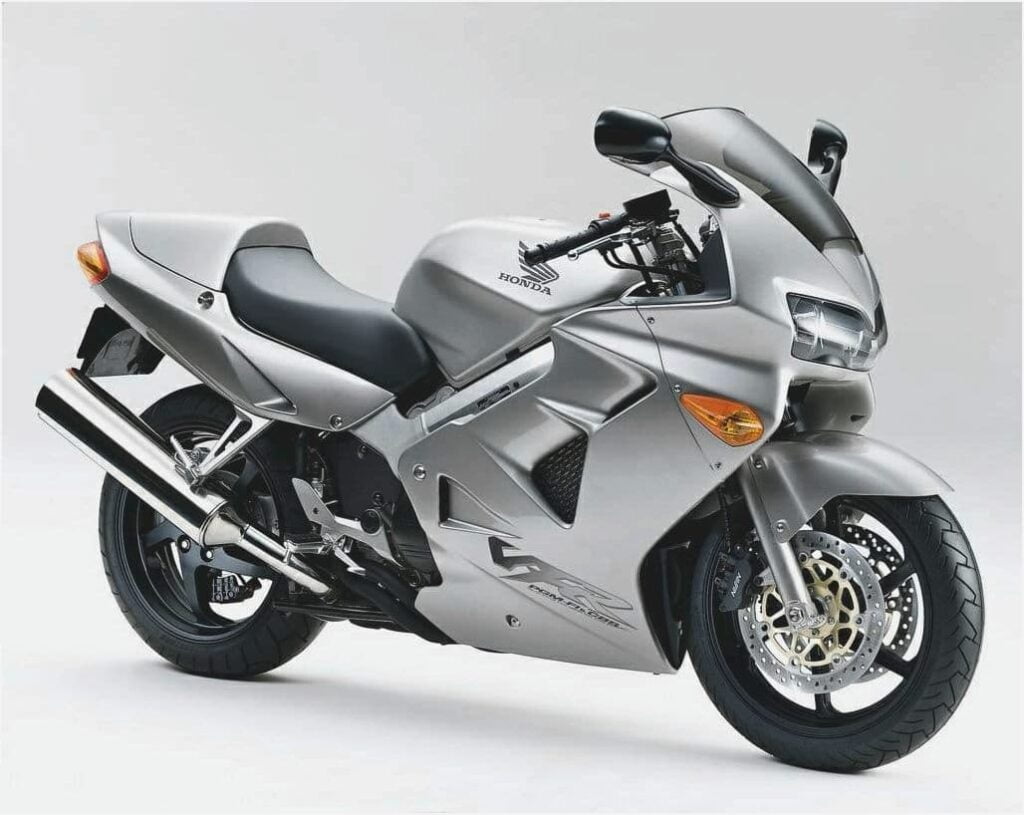
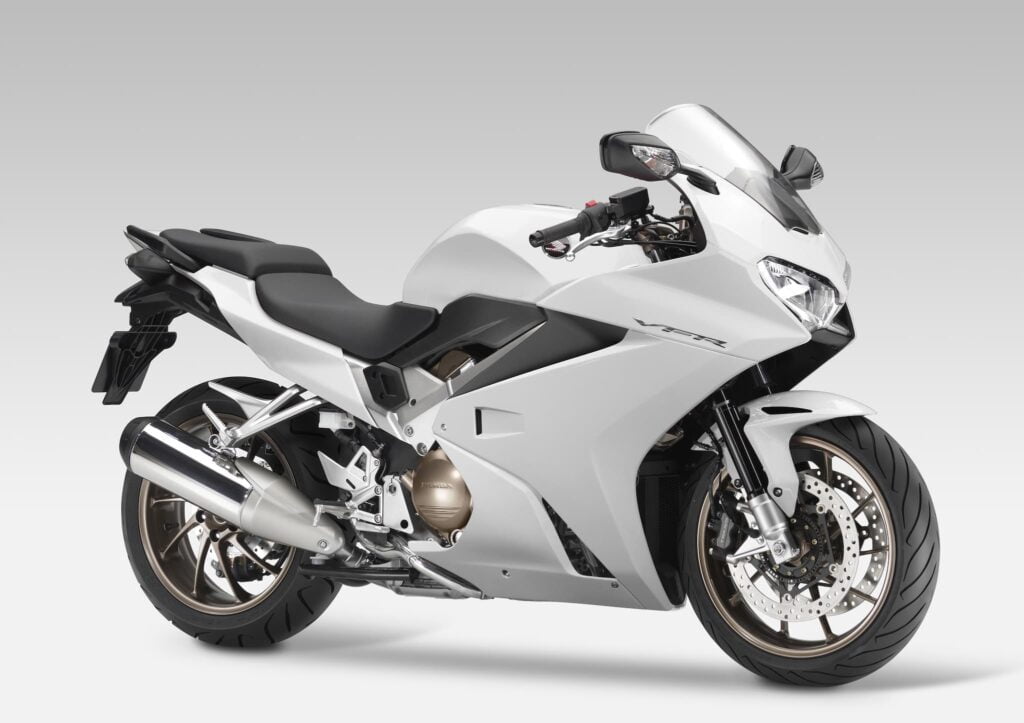
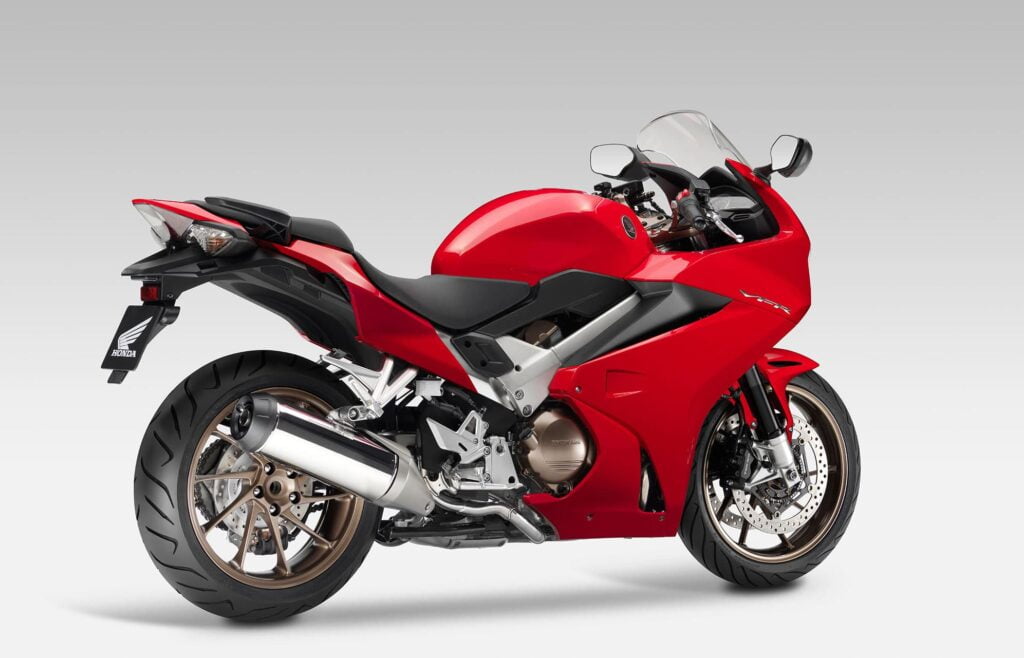
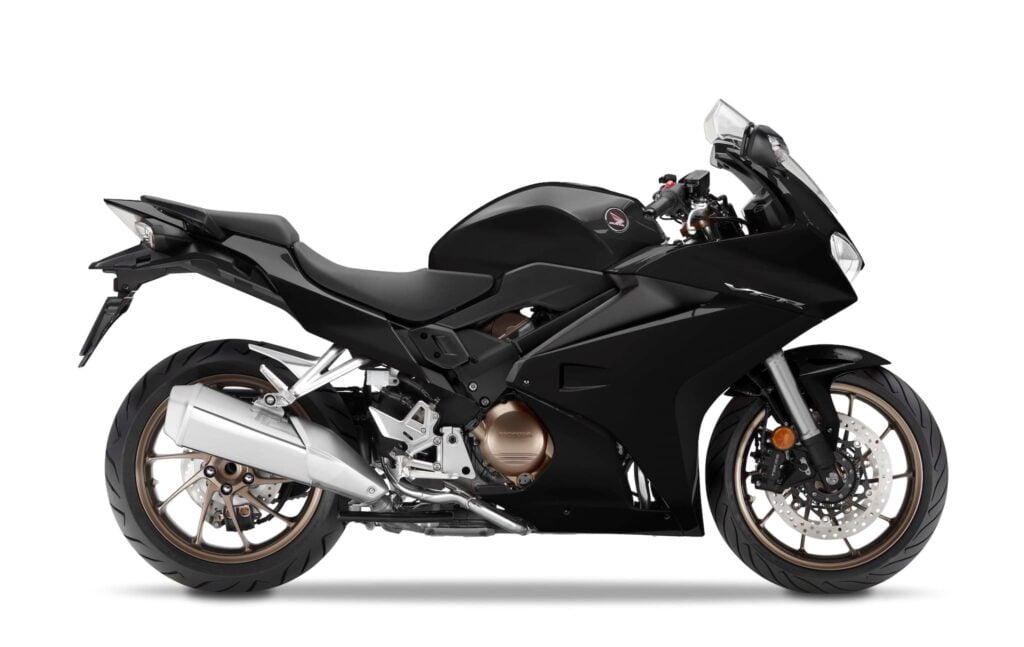
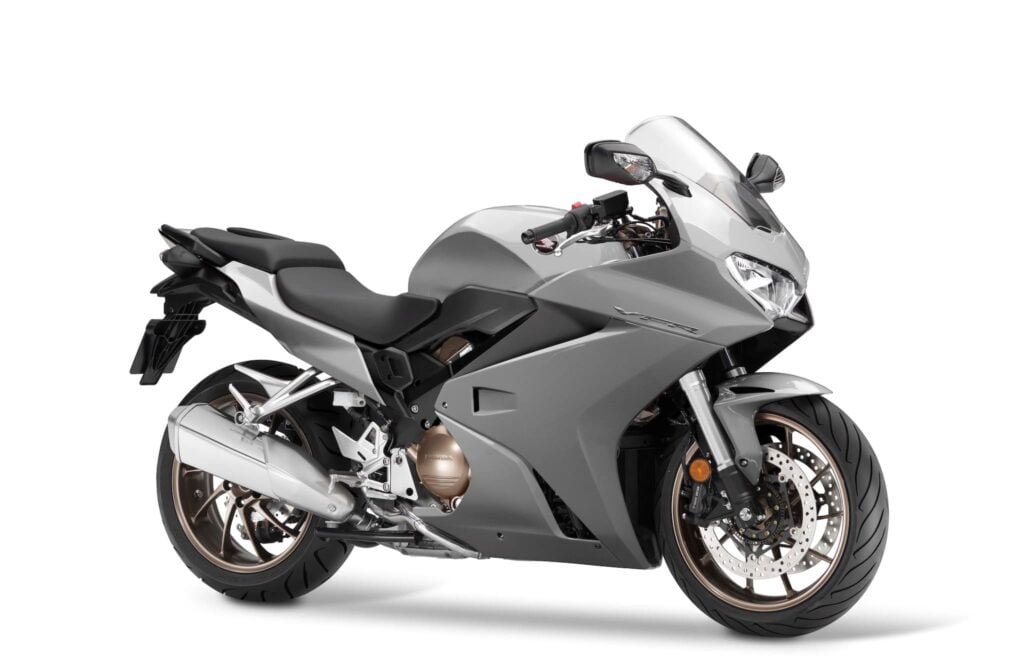
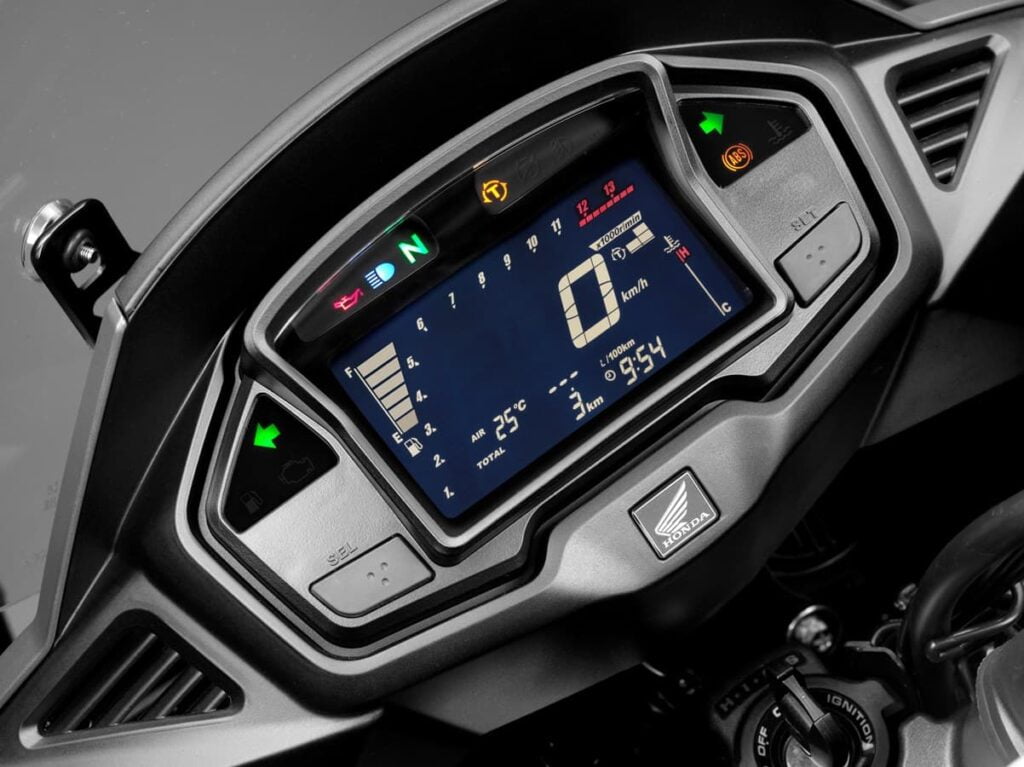
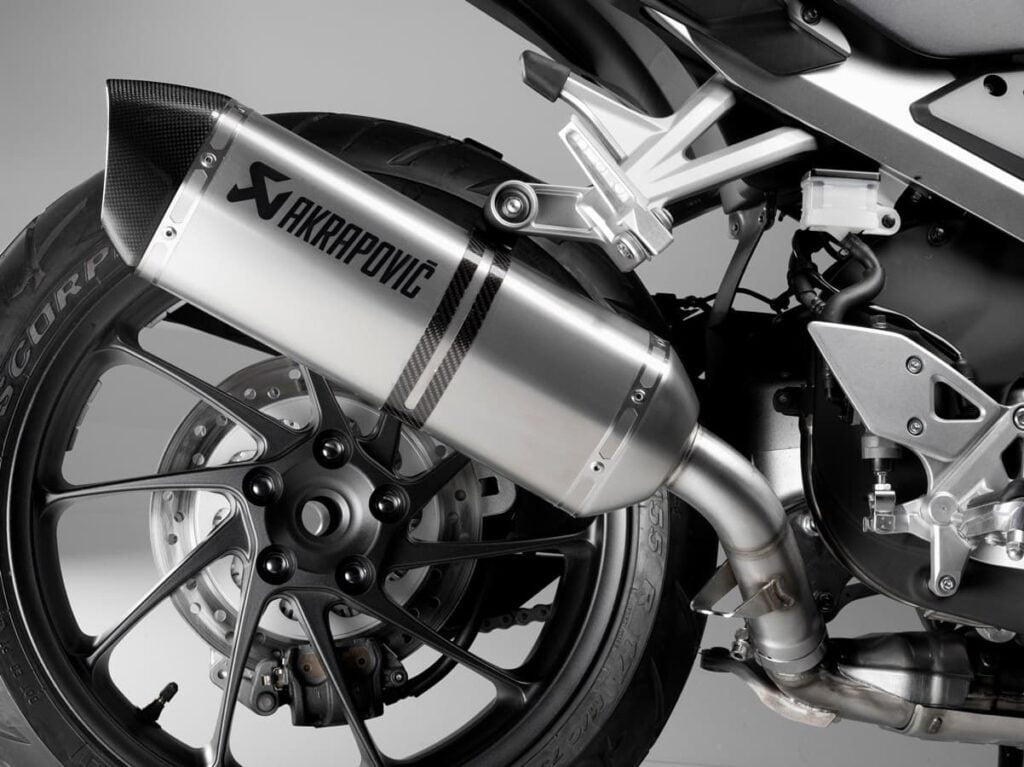
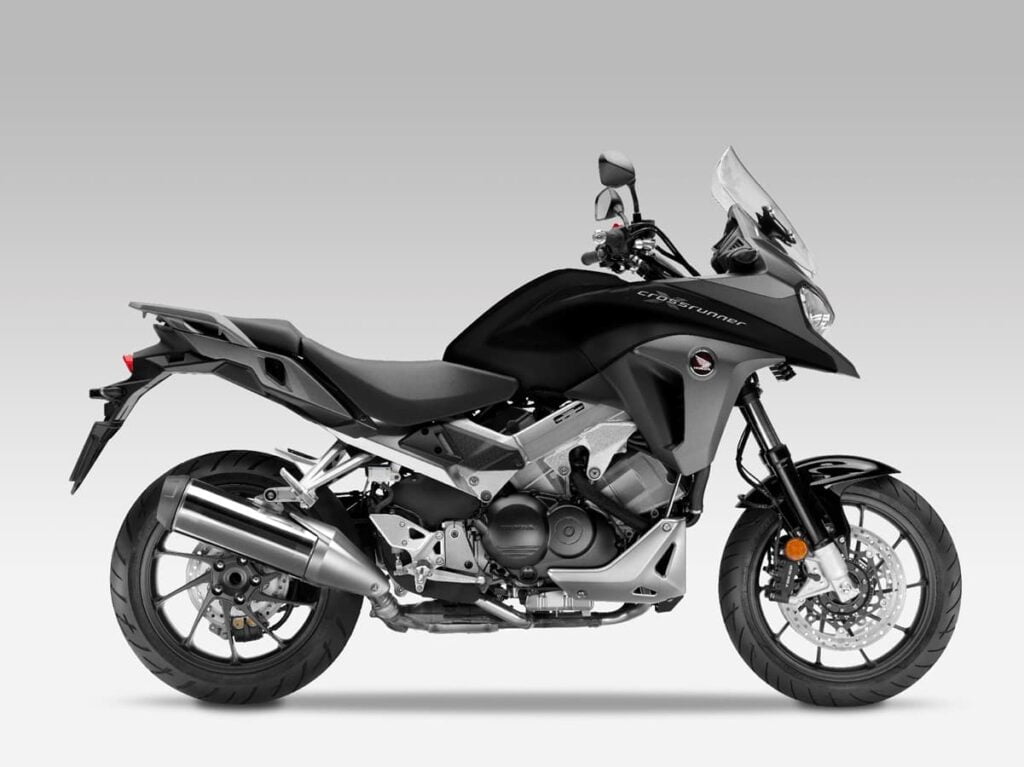
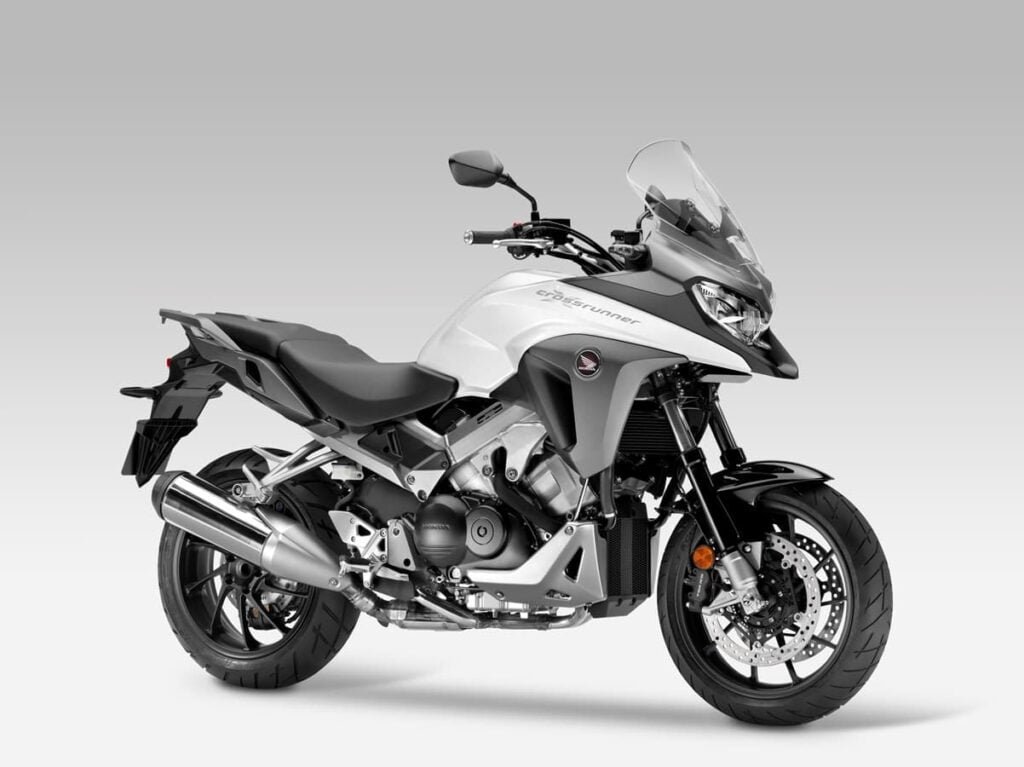
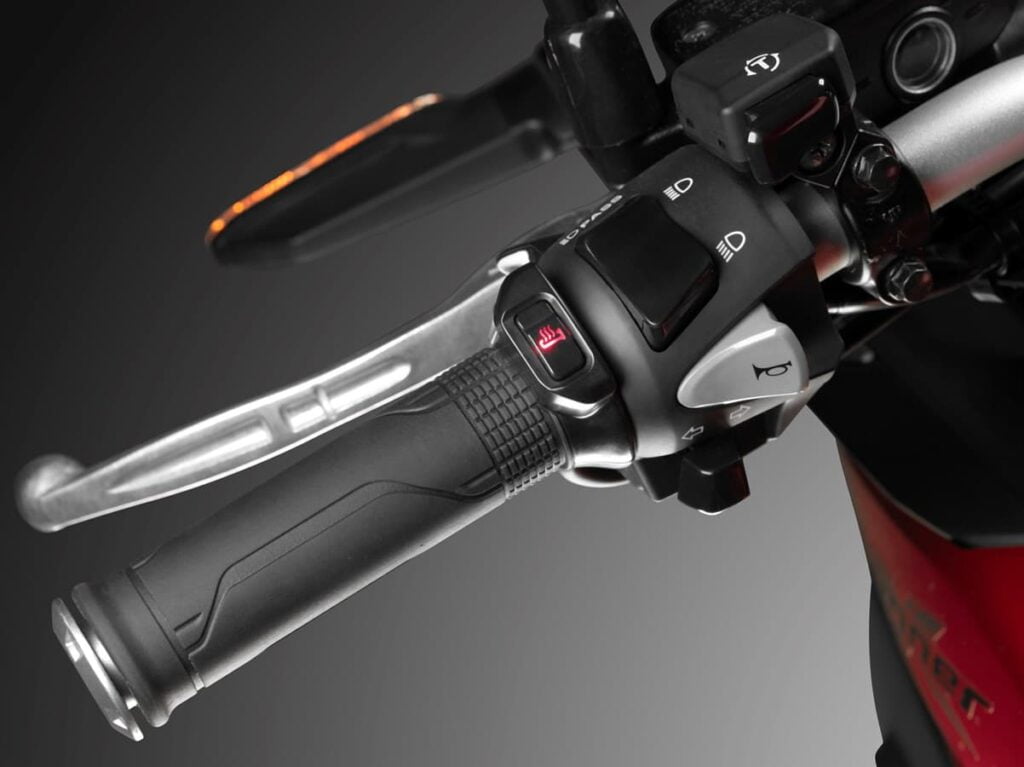
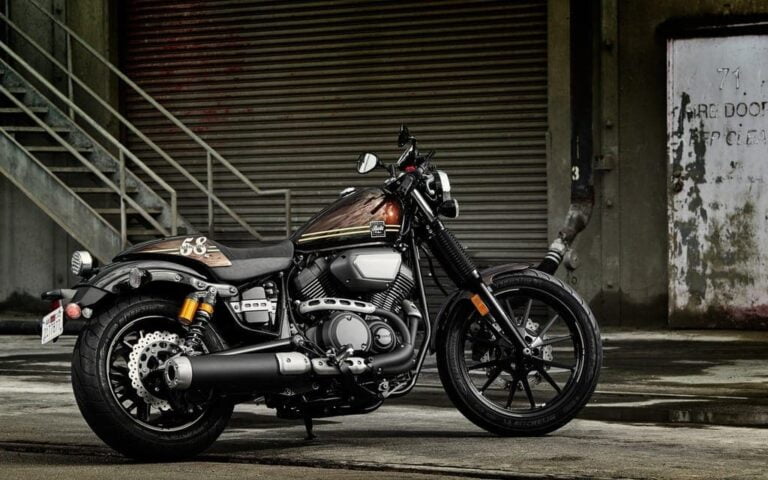
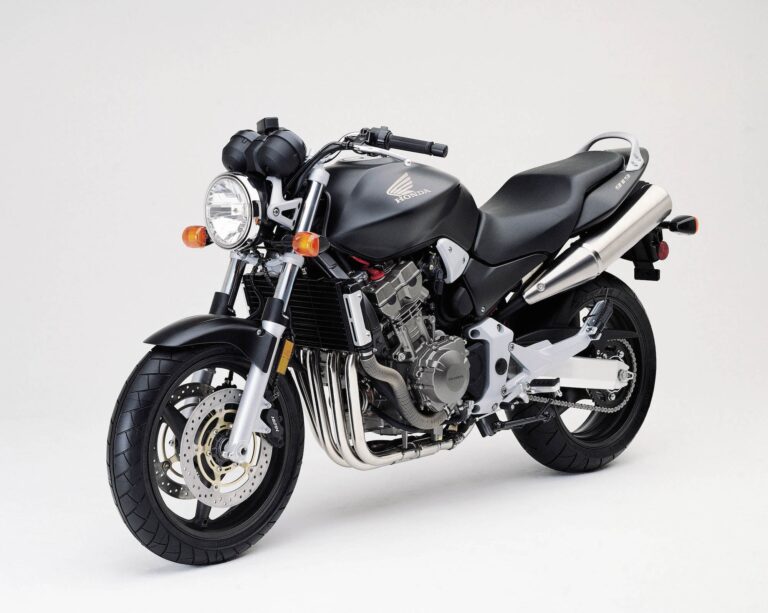
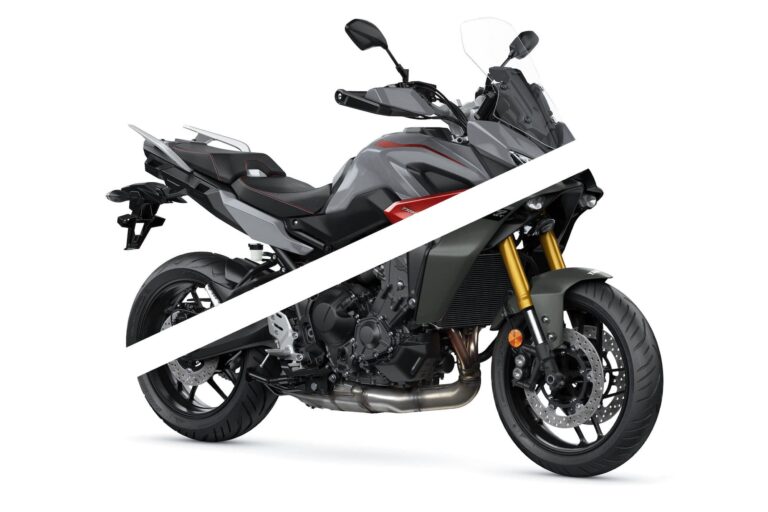
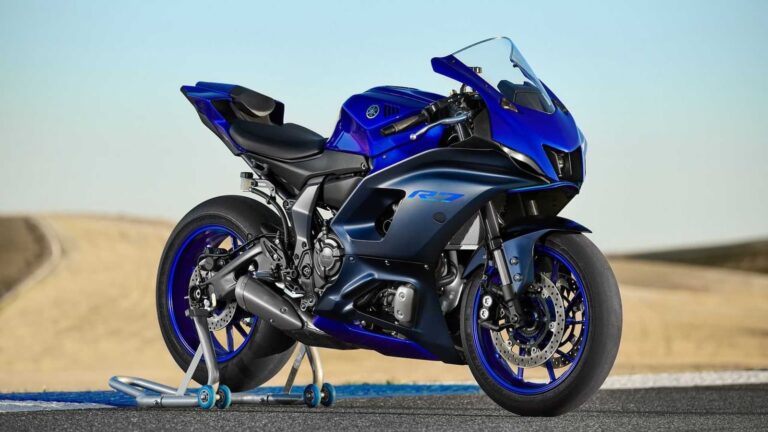
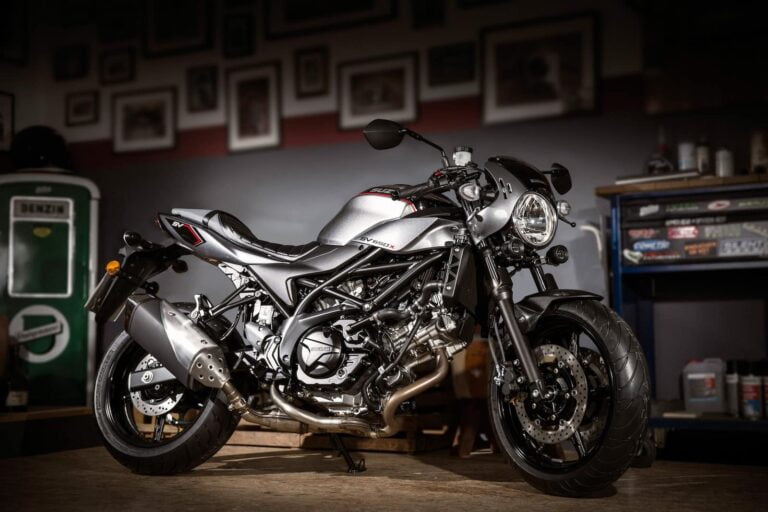
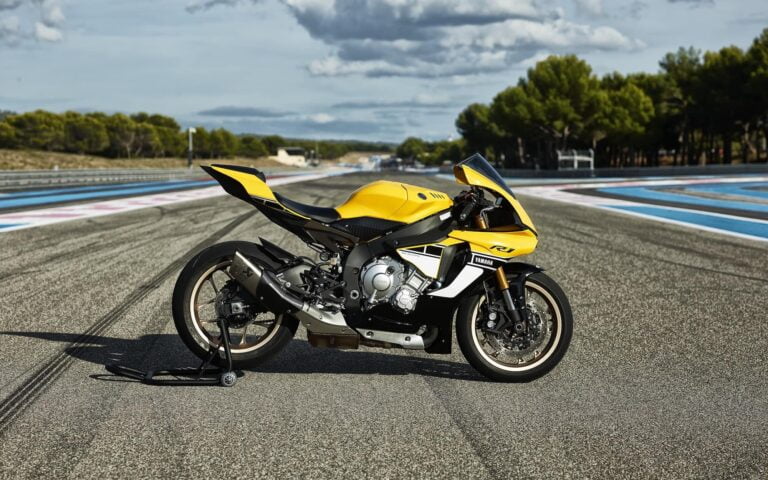
Love these Hondas though I have never owned one. Very practical and usable bikes. My particular favourite is the 5th generation 800.
Good article, although I thought they stopped making the VFR between 2010 and 2012/13, so the 6th gen was only available 2002-2009 (I had a 2002)
From the owner of a 1987 tariff buster interceptor, I enjoyed the article. I loved that bike and ripped up the roads for over 15 years as I moved from Nebraska to New Mexico to California to Texas. Unfortunately I lost it in a fire in 2005.
A brilliant article. Nicely written and enjoyable reading from a fellow 8th Gen owner. 👏👏👍👌
Thank you! Written with love.
Great article ! A vfr fan since I first road one in the early 90s. Loved them so much I picked up a brand new 99 and ended up amateur racing it as much as I road it on the street . Beat a ton of young kids on sport bikes , drag racing on Thursday night and rode all day Saturday , comfortably, in the north ga mountains . Reached 160 at road Atlanta one day and would carry passengers the next . Been an auto mechanic but never a motorcycle mechanic , yet I am 90% thru a 20 year service with just the body work to put back on . Super easy to ride , super easy to work on , super easy to look at and love . I’ll never want to sell this bike , I don’t know of another bike I’d trade it for ! I. Hope Honda doesn’t give up on this formula ! I’m sure there are tons of other owners who absolutely love the sound of the gear driven cams . I have an Erion racing exhaust that sounds amazing and a nice performance upgrade.
I know you will love yours for a long time .
Hello from a 4th gen rider from Denmark. Very well written with lot of facts.
Thanks
Loved the article… LOVED IT! A walk down memory lane and full of great info and things I never knew. Much appreciated.
I started with a used 1986 Interceptor 500 in high school and loved that bike. It was stolen after college, so I upgraded to a 94 VFR750F, but always missed the lightning quick 500. When the 2007 25th Anniversary Interceptor came out in the retro paint job, I *HAD* to have it and traded in the 94. Thankfully, Honda had improved the VTEC by then with some of the horror stories I’d read about its earlier versions. I’ve had a few other bikes, but the VFRs have always been my favorites.
Great article, liked it very much, I fine what you can always learning knew information as you go thought life, keep up the good work.:)
I still have my first VFR800 2002 sitting in my shed (RED), some small mod’s, flapper valve, pair valve isolated (marble) K & N filter, etc. love this bike, plenty of good touring roads in Australia, lucky Me!
Great article I’m new to VFR but not to Honda been a biker for 50 plus years just sold my CB1300SA to buy a 5 th gen 1998 MY and I love it. I thought the CB was fun but as I progress in years getting a bit heavy ( the bike) for me. At 50 plus kilos lighter the VFR suits me fine. I’ve fitted new bars to give a more upright ride for my old wrists and tendons, found a great pair from a German company first class quality and reasonable price.
Well here’s looking forward to a British summer on my new to me two wheels.
Bought my 2000 VFR800 in 2018 with only 19,500 MIles on it. I’m the 3rd owner, 1st owner had it from 2000-2010 in the USA, 2nd owner imported it into Canada in 2010 and had it for 8 yrs, then I saw it on Craigslist Vancouver BC in 2018, fell in love with the style, sportiness, chromed wheels, and for Vanity reasons, LOVED the Yellow color. I haven’t driven it a lot since then, only put on another 2000km. If I could change anything, is that I want to change the Speedometer to KMS as I live in Canada and have The Top Case and Saddled bags in the original stock color yellow.
Good informative article on probably one of the best Motorcycles Honda ever built especially the 94-97 RC-36 2
As many British MotorCycle magazines wrote in the 90s
I’ve Owned 3 Versions amongst many other bikes before.
2000fi 800 ,2002 VTEC and for 11 years now a 96 750 FT last of the smoother carbs compared with later fuel injection models.
Unbeatable in my opinion if you get a good One that’s been looked after.
Put a decent rear shock on it and they are as good ,if not better than any newer gen ,and if tuned & balanced properly.
Much better fuel consumption 220 miles to a full tank ,Bomb proof Engine
With evidence of Stan a Despatch rider in London doing 440,000 miles on One Engine and 420,000 on the second engine in the same bike !!
Bike magazine UK
If you are into Vfrs try the 94-97 model
If you haven’t already,
Andy C
Just wanted to add my thanks to you for this write-up. I discovered the site while reminiscing about rides with my buddy; him on his awesome 2008 VFR and me on a Ducati 1098. We made many trips around the San Francisco Bay Area including annual pilgrimages to MotoGP in Laguna Seca (before it moved to Texas) and an epic trip from San Jose to San Luis Obispo via the Coast Highway through Big Sur. Not only was the VFR agile, swift and beautiful to look at, but my friend offered one of his saddlebags up for my gear.
He worked as a graphic designer for a custom motorcycle shop, and the other guys there offered up some enhancements for the bike. Drilled out the mufflers to produce a nice throaty sound, retuned the jets to match, upgraded the suspension.
It served as a daily driver, weekend cruiser and long-distance tourer. It could really do everything he wanted. He might have it still, but he was leading on a ride one day when we encountered a newly repaved twisty road with fresh gravel topping. He slid out on a decreasing radius downhill turn and that was the end of the VFR.
He cracked a scapula but healed up. Never rode again but he’s living in Hawaii now and still designing, so life remains good, and the memories fresh.
Dana! Many thanks for this excellent outline delineating the significant differences between the Viffer gens! I just hit the dreaded 77 mark in life but I am still a devoted motorised two-wheel enthusiast, albeit of perhaps a somewhat more refined sort in contrast to so many puerile souls who are still fixated by the raw speed and macho noise quotients of today’s overpowered bikes-on-steroids.
I’ve always preferred Japanese technology for its absolutely masterful interpretations of 4-cycle engine brilliance to those of Italy, the UK and America (e.g. the ‘Hardly-Goodson’ variety) and after owning Yamahas, Kawasakis and Hondas (I started riding a Honda C-110 SuperSport in 1962), I find that the VFR800 is absolutely the best match-up for my sedate riding style.
But then, I’ve been to Mach 2.3 and 60K feet in USAF F-106s (back in the 60s), so I’ve long-since worked ‘higher and faster’ out of my system. Now I prefer to take it easier and stop here and there to smell the Nasturtiums along the way!
My first VFR was a yellow 2000 with only 3000 miles on it when I acquired it and to this day I ruefully regret having sold it! My next VFR was a red 2002 VTEC model, which I also found less than ideal (VTEC). Today, I have a 1999 VFR800Fi that I shall probably keep forever. It’s the near-perfect bike for me on those days when the constant threat of careless 4-wheel motorists seems more lessened than usual!
With your article on the generations, you’ve done all of us Viffer fans a great service, IMO! Thanks again and hope your New Lunar Year is a good one…safe, healthy and personally fulfilling!
Thanks so much Kalikiano! I’d still like to try some of the older VFRs, like a 750, if I can even find one. I do agree we need all to work “higher and faster” out of our systems at some point… though sounds like most of us don’t get to do it the same way you did. Sounds like you’ve got a cool back-story — I’ll go read some of your writing while I’m on vacation for a week.
It’s nice to read such a comprehensive list that has some passion and isn’t so clinical; fitting for this family of bikes.
I’ve recently purchased a 2014 Honda Crosstouer. I understand why they were not popular, but to anyone that gets the chance to try one, do it. They are criminally underrated bikes and much loved by their owners.
Gen 1 (FG, FH) is the original VFR750 from 1986-1987 (-89 USA). Easy to spot by the 18″ rear / 16″ front wheels and the steel rear foot peg hangers. The USA only received this model and missed out on the second generation that the rest of the world got.
Gen 2 (FJ, FK) is the revised version that most countries sold between 1988-1989. Visually similar but very many revisions. The 17″ wheels and the aluminium rear foot peg hangers are the quick clues. Fairings, carbs, ignition, instruments, brakes, screen & much more are all different. I own one.
Thanks “P Dantic”. I’ve tried to clear things up in the body of the article. Nice bike, lucky you. Something tells me yours is in excellent nick.
Really good information of the vfr history found it very interesting being a new owner of a 1991 model .
Might add a senior rider .
Best wishes
Roger
My ’99 VFR800 made 105 RWHP on the dyno with a slip-on and PC3, and 109 with an Erion Racing full exhaust.
What about the VF1000R?
I know it’s closely related, but it’s not exactly the same. Some call it part of the series and some don’t.
Anyone found a manual online for the 2017 Honda VFR800F?
Same model from 2014-2017. Try here. https://maintenanceschedule.com/wp-content/uploads/2023/05/Honda-VFR800-2014.pdf
I’ll email you a digital copy, presuming that’s OK with you.
Great compilation of the VFR’s evolution. Thank you.
Believe the lower vtech engagement point was 2006+ (ridden a couple of them).
Also a couple of other convenience changes somewhere between Gen 6 and 8: dial adjuster for shock, same key for ignition & bags, gear indicator, adjustable display brightness.
Cheers
PS think you meant “gear” rather than “chain” in “Why chain driven cams? Because they have an awesome whine! But it’s not just that — owners believe them to be more reliable”
Thanks — had only recently updated that gear section, probably too late at night! And yeah should be 2006 for the VTEC point.
Re the preload adjuster, it seems it was always available on ABS models. ABS became standard in some markets from 2006, though.